
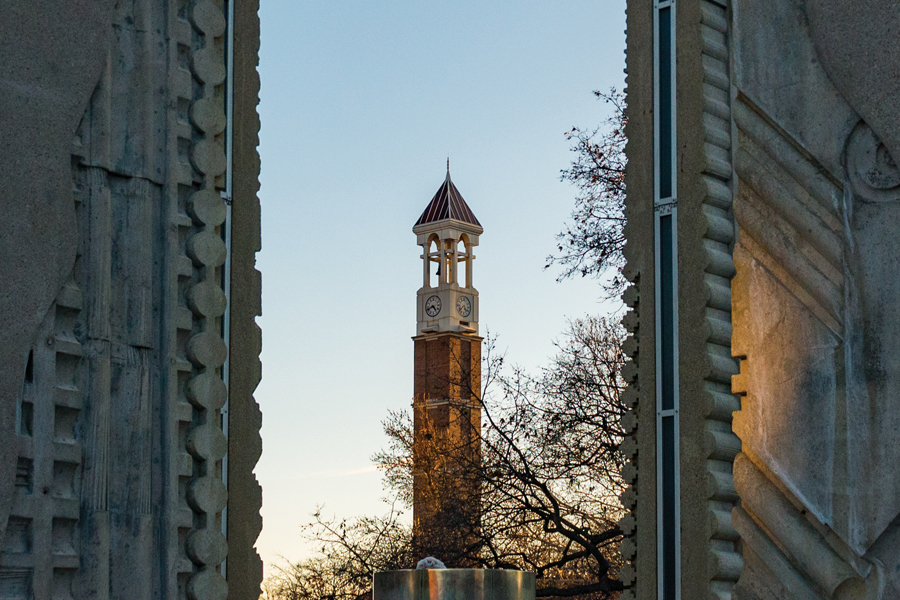

Mung Chiang
An introduction to this issue of FRONTIERS magazine by Dean Mung Chiang.
10 minutes to read
As we resume the printed publication of Purdue Engineering’s research magazine this month, we reflect upon the pinnacle of excellence at scale in the discovery and translation of knowledge at our college. Rankings, such as the No. 4 graduate engineering program in the U.S. this year and our highest in 28 years, as well as such metrics as citations, publications, awards, patents, and extramural research funding, are all only partial reflection of the quality and impact of our faculty, PhD students, and research staff. Research excellence comes in different forms, from large-scale experimental projects to single-author theoretical advances. We celebrate all of them as long as they are the very best in their own fields.
This issue of FRONTIERS magazine focuses on one particular type of research success: large national centers funded at $10 million or more and led by, or with significant contribution from, Purdue Engineering faculty. It is truly impressive that our faculty have successfully competed in these highly selective processes, for 12 new national research centers in the past four years. Along with several centers in their second five-year cycle, our college’s research leadership in the country has enjoyed very positive first and second derivatives in its trajectory. As you browse through these pages, you will also observe the diversity of funding sources of these centers across many federal agencies and corporate partners.
Among the topics important to the nation and to humanity, these Purdue-led centers often reflect a key pillar of our strategic plan in 2018: to become the best in the world at the interface between the virtual and physical sides of engineering, between what we code and what we touch, between bytes and atoms. With Purdue Engineering Initiatives in Autonomous and Connected Systems, in Cislunar Space, and in Engineering-Medicine, along with Purdue’s Next Moves in National Security Technologies and in Digital Agriculture, we anticipate many more wins of large magnitude and significance in the coming years.
Winning any one of these competitive centers is a culmination of many colleagues’ Herculean effort. The lead faculty must be devoted to a large, multi-institutional team over months, if not years, of focused preparation. The most capable staff help land the centers and run their operations. And the PhD students and postdocs must first demonstrate their world-leading results before they enjoy the benefits of studying at the lead university of national centers. Our season’s greetings in 2021 and a small step in the long-term strategy is the recent announcement of the long-overdue elevation of the PhD student stipend in our college. Excellence at this level and with such scale must be backed with resources to support the amazing talents here at Purdue Engineering.
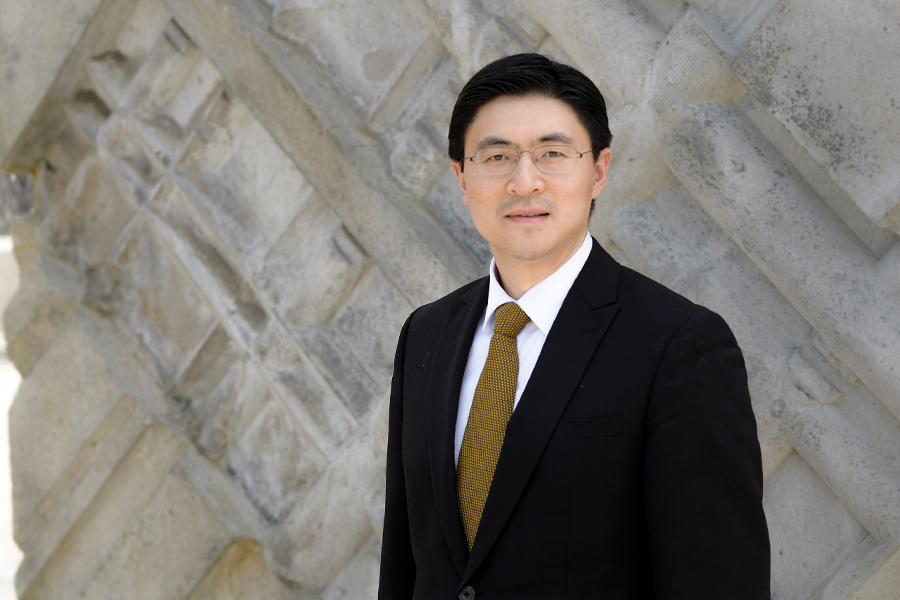
Alumni should send change-of-address notices to:
Dick and Sandy Dauch Alumni Center
403 W. Wood Street
West Lafayette, IN 47906


Advancing Sustainability through Powered Infrastructure for Roadway Electrification
This center is helping to speed adoption of electric vehicles (EVs), which offer tremendous opportunities to reduce emissions and near-road exposures to pollutants.
(Image credit: ASPIRE)
10 minutes to read
The transportation industry is in the midst of a transformation not experienced since the invention of the automobile. Vehicles drive the U.S. economy, transporting more than 11 billion tons of freight and traveling over 3 trillion miles per year. However, vehicle emissions seriously affect public health and the environment, and rising oil prices affect household budgets as well as our national economic stability and security.
Electric vehicles (EVs) offer tremendous opportunities to reduce emissions and near-road exposures to pollutants. In addition, EVs hold potential for other transportation innovations in shared mobility and automation that will shape data-driven policies encouraging advances. But efforts to expand adoption of EVs face significant challenges, centered around range and the supporting charging infrastructure.
Purdue University is playing a trailblazing role in overcoming these barriers as a core partner in the National Science Foundation (NSF)’s multi-university Advancing Sustainability through Powered Infrastructure for Roadway Electrification (ASPIRE) Engineering Research Center (ERC). Established in 2020 with a five-year, $26 million NSF grant, renewable to 10 years and $50.6 million, ASPIRE is dedicated to improving health and quality of life by developing new infrastructure that facilitates adoption of widespread, sustainable and equitable vehicle electrification. The ERC encompasses collaboration among universities, national laboratories, and more than 40 global industry partners.
The ASPIRE ERC is the first of its kind in the world to take a holistic approach to eliminating range and charging as obstacles to electrifying all vehicle classes, from passenger cars to heavy-duty trucks. The center focuses on creating innovative, shared wireless and plug-in charging infrastructure that brings the power to vehicles — where they are driven and parked.
Intended results include smaller and longer-lasting vehicle batteries, effectively unlimited EV range, and a seamless charging experience. ASPIRE leaders envision EVs becoming less expensive to buy and operate than gasoline and diesel counterparts, a resource to decarbonize the electric grid, and a perfect match with autonomous and connected vehicles.
ASPIRE’s Purdue team — headed by Campus Director and Adoption research thrust lead Nadia Gkritza, a professor of civil engineering and agricultural and biological engineering — recently embarked on two significant research projects, each expected to take two to three years:
In one of these ventures, Purdue and the Indiana Department of Transportation (INDOT) are working to create the world’s first contactless wireless-charging concrete pavement highway segment. The project calls for using magnetizable concrete, developed by German startup Magment GmbH, to help facilitate wireless power transfer to EVs as they are driven. Professor John Haddock and his team will test the structural integrity of the electrified roadway at the Indiana Department of Transportation Accelerated Pavement Testing facility in West Lafayette, Indiana.
A second test led by Professors Dionysios Aliprantis and Steven Pekarek at Purdue’s Vehicle Systems Laboratory will assess the capability of the system to transfer high levels of power wirelessly. Following pavement testing, analysis, and optimization research, INDOT will construct a quarter-mile-long testbed for charging heavy trucks operating at high power (200 kilowatts and above). Once testing is successfully completed, INDOT plans to use the new technology to electrify a segment of interstate highway in Indiana.
In the other pathbreaking ASPIRE project involving Purdue, the University is collaborating with the U.S. Department of Energy (DOE) and Utah State University to study and break down the human barriers to large-scale transit electrification – specifically, regarding buses. The Purdue team is identifying and analyzing transit users’ and non-users’ concerns and preferences. Findings will lead to articulation of policy implications, as well as recommendations on how transit agencies can increase ridership and promote wider public use of electric buses.
ASPIRE research is linked with educational, mentoring and outreach initiatives for students at all levels. Purdue graduate students are engaging in multi-institution collaborative research, mentoring undergraduate and K-12 students in research, and participating in K-12 outreach events. At the same time, Purdue undergraduate students are learning about the research through coursework and educational training initiatives, such as Vertically Integrated Projects (VIP), and gaining research experience from undergraduate summer programs.
Taken together, Purdue’s ASPIRE efforts hold strong promise to move the needle on both technology development and public acceptance, prompting wider and equitable electric vehicle adoption.
More information:



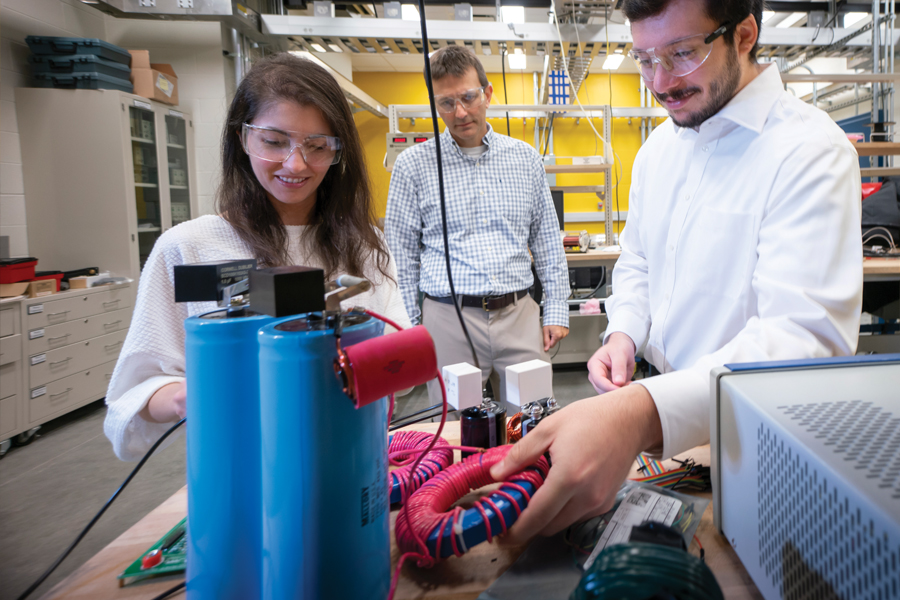
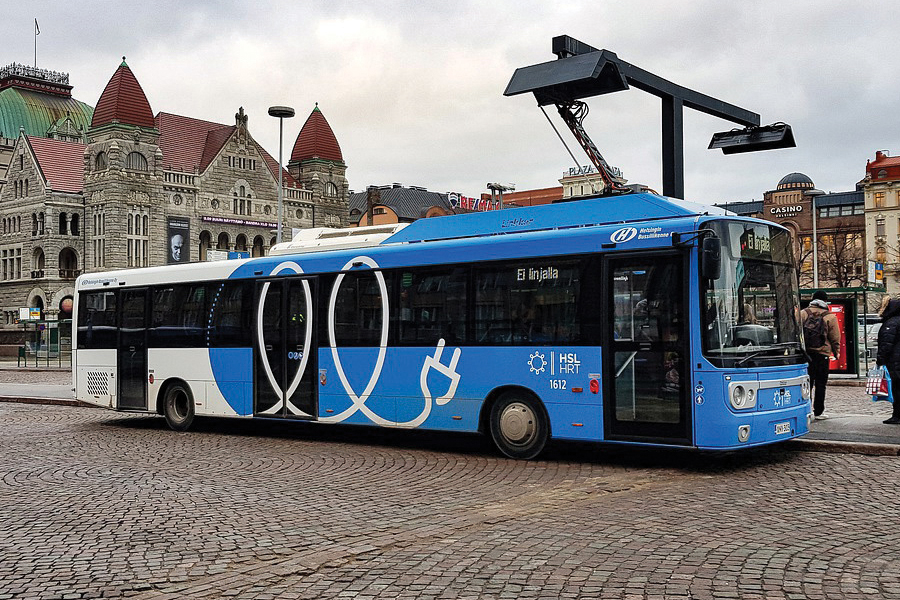


Purdue University Center for Programming Principles and Software Systems
Research conducted at Purdue provides both the theoretical foundations and the practical know-how to tackle these software challenges.
10 minutes to read
Software is eating the world. Every portion of the economy is being fundamentally affected by the software that runs industrial processes, manages our social lives, directs the operations of road and rail networks, and undergirds the computing systems that are ubiquitous. The design of this software is being shaped by challenges across the computing landscape: the desire for artificial intelligence (AI) and autonomy, the need to protect operations and data from malicious actors, and the ever-changing computational substrates on which we run this software (from hardware accelerators to quantum computers).
Research conducted at Purdue provides both the theoretical foundations and the practical know-how to tackle these challenges, from building robust, efficient, explainable AI systems; to creating secure-by-design software that is resistant to cyberattack; to developing the systems substrates that make modern software fast, energy-efficient and secure.
The Purdue Center for Programming Principles and Software Systems (PurPL) brings together two dozen researchers from programming languages, AI and machine learning, security and cryptography, computer architecture, and application domains to push this research forward.
Jumpstarted in 2019 with a $10 million grant from the Intelligence Advanced Research Projects Activity (IARPA) to build the programming languages and systems needed to create secure distributed software, PurPL is now a self-sustaining research center driven by grants from the National Science Foundation (NSF) and U.S. Department of Energy, as well as generous support from Facebook and Microsoft.
PurPL’s industrial consortium provides more than $200,000 per year to sustain the operations of the center independent of sponsored research projects. PurPL runs a weekly seminar series with internal and external speakers. The center provides seed grants for high-risk, high-reward projects. In addition, PurPL supports travel to conferences by its students, and summer internships for undergraduates who want to participate in PurPL research.
In September of 2019, PurPL was launched with PurPL Fest, a public symposium for research in PurPL-related fields. This symposium, which was co-located with the Midwest Programming Languages Summit (a yearly workshop started by PurPL faculty), brought in a half-dozen high-profile external speakers from academia and industry, and featured talks by PurPL faculty about ongoing research projects. This symposium was attended by more than 200 participants, from two dozen universities and companies. The past two years, PurPL has held annual symposia with virtual workshops highlighting PurPL researchers and industrial partners.
PurPL researchers continue to push the frontiers of software systems research, with advances including efforts to build safe and secure distributed systems, automatically optimize engineering simulation codes for modern hardware, make cryptographically secure computation more efficient, and create the next generation of programming languages for machine learning and data science.



Internet of Things for Precision Agriculture
This ERC is developing new systems to replace methods for monitoring crop conditions that are manual, labor-intensive and costly.
10 minutes to read
It’s estimated that the global population will grow by about one-fourth, to nearly 10 billion people, by 2050, requiring a large increase in the food supply. The National Science Foundation (NSF) Engineering Research Center (ERC) of the Internet of Things for Precision Agriculture (IoT4Ag) aims to help meet that need through precision agriculture — the use of technology to measure and analyze data from the field in order to better manage energy, water and agrochemical inputs, as well as to enhance crop yield and farm profitability.
Current methods for monitoring crop conditions are manual, labor-intensive and costly. While the concept of precision agriculture has been around for more than three decades, information technology now provides an opportunity to fulfill the urgent need for new physical and cyber-physical systems that can sense and respond to multiple variables in the field with higher resolution, increased specificity, greater speed, and enhanced autonomy.
The NSF launched the multi-university IoT4Ag ERC in 2020 with a five-year, $26 million grant. The center’s mission is to create and translate into practice IoT technologies for precision agriculture — as well as train and educate a diverse workforce that will address the societal grand challenge of food, energy, and water security for decades to come. That requires expertise in agronomy, agricultural engineering, economics, environmental science, and cyber-physical systems across the four IoT4Ag partner institutions, including Purdue University.
In addition to planned research, there is a large outreach effort with thrusts in Workforce Development, Diversity & Inclusion, and Innovation. David J. Cappelleri, Purdue site director for IoT4Ag and associate professor of mechanical engineering, leads the pre-college Engineering Workforce Development thrust, which develops and deploys programs in schools, after-school activities, camps, libraries, and museums. IoT4Ag is also collaborating with local community colleges to help train and potentially transition students with IoT4Ag skills to bachelor’s degree programs.
IoT4Ag envisions the farms of the future using autonomous farm machinery to plant a network of sophisticated biodegradable IoT sensors in the ground. They will deploy aerial and/or ground drones for wireless interrogation of these sensors, pulling data from the field, relaying sensor data between machines, and storing and analyzing it in a central repository. This data will be available throughout the growing season at very fine spatial and time scales to enable specific decisions and precise interventions at optimal times. It is anticipated that this advance will spur dramatic increases in productivity and decreases in resources needed to field a healthy crop.
In its first year, IoT4Ag has achieved significant accomplishments across each of its four pillars — Convergent Research, Workforce Development, Diversity & Culture of Inclusion, and the Innovation Ecosystem. Among highlights, IoT4Ag:
IoT4Ag’s near-term goals are to establish integrated sensor-communication-response systems for the farm of the future. Over the next 10 years, the IoT4Ag goal is to pair transformative science and engineering-based integrated systems for precision agriculture with a diverse, well-educated workforce to generate more crop for every drop of water or Joule of energy, assure sustainable agricultural processes, and realize a $47 billion annual increase in U.S. crop market value. IoT4Ag is working to deliver the people and Internet of Things that enable a food-, energy-, and water-secure future.

Detecting the onset of nutrient deficiencies and diseases at early stages can prevent their spread and help farmers develop mitigation practices to limit negative impacts on crop yield. Currently, technology does not exist for farmers to automatically detect and collect corn leaf samples to screen for disease or nutrient stress at high spatial and temporal resolutions. Existing corn phenotyping rovers have limited temporal resolution due to their large weight, and their non-optimal downward-facing viewing angles for disease or nutrient deficiency screening, as symptoms develop low in plant canopies.
In this project, led by Professor David J. Cappelleri, the AgBot unmanned ground vehicle (UGV) is being designed for in-row and under-canopy crop sampling, monitoring and assessment. AgBot can traverse corn fields and autonomously collect samples at optimal spatial locations to analyze crop stress, such as water, nitrogen and potassium deficiencies. It also is being equipped with a sensor suite to collect additional morphological data from the crops.
Initial findings have resulted in successful prototyping and proof-of-concept demonstrations of the AgBot UGV corn sampling and data acquisition sensor suite systems at the Purdue Agronomy Center for Research and Education (ACRE) facility. Currently, the team is working on implementing autonomous navigation, perception and sampling algorithms to the AgBot.
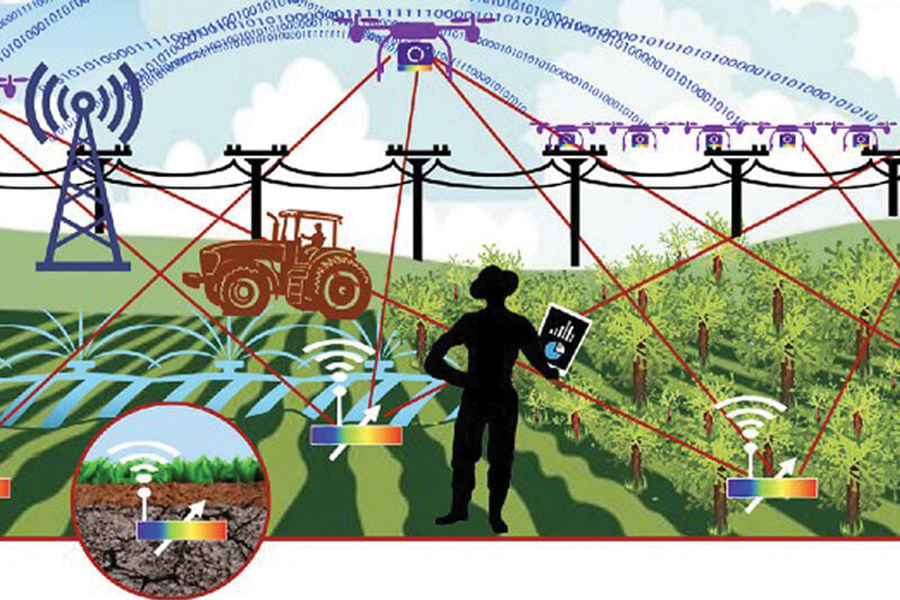
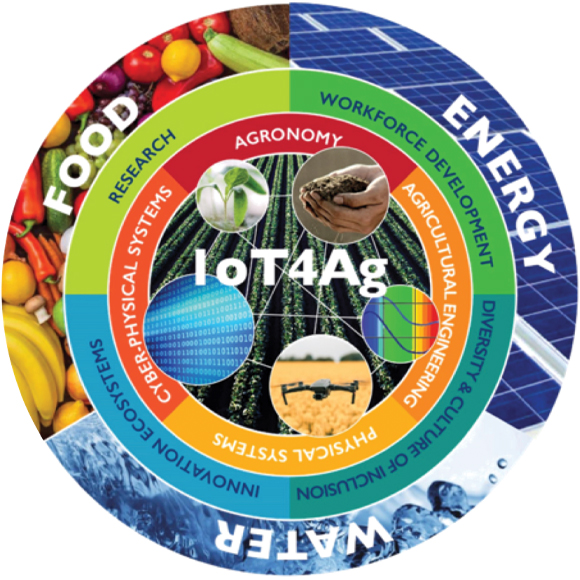


Network for Computational Nanotechnology/nanoHUB
Recognized by the R&D 100 award in 2020, nanoHUB has transformed how people from around the world consume simulation and data.
(Image credit: NCN | Purdue University)
10 minutes to read
Banner image: The graphic depicts the global reach of nanoHUB. Red dots represent lectures and tutorials, yellow dots represent simulation users, and green lines represent collaborations documented by publications citing nanoHUB as a resource.
NCN (Network for Computational Nanotechnology) pursues its mission through the nanoHUB platform. Founded in 2002 and supported by the National Science Foundation (NSF) with more than $62 million to date, nanoHUB is the premier open and free platform for computational research, education, and collaboration in nanotechnology, materials science and related fields. nanoHUB is one of the first broadly successful science gateways, providing a turnkey computing environment for interdisciplinary research. The platform presents powerful research-grade simulation codes as easy-to-use apps that anyone can access in a web browser. This frictionless access allows researchers to work without barriers, educators to provide richer experiences for their students, and students to learn by rapid virtual experimentation.
nanoHUB accelerates innovation by making scientific software and associated data available and useful to research, development and education communities, removing traditional barriers of computational expertise and access to specialized hardware.
It does so by enabling simulation software developers to easily transform their products into apps that run in the cloud with a simple interface presented through a web browser, allowing domain experts, including researchers, instructors and students, to focus on applying these products to advance their fields.
Recognized by the R&D 100 award in 2020, nanoHUB has transformed how people from around the world consume simulation and data. It serves more than 23,000 annual simulation users, who perform over 1 million simulations using more than 700 online apps driven by powerful scientific software. In addition, more than 2 million worldwide visitors access nanoHUB’s 7,000 online resources, including seminars, cutting-edge courses, animations, and teaching materials.
nanoHUB has changed how simulation tools are used in education and research. nanoHUB simulations are employed in every U.S. News & World Report top 50 engineering school in the U.S. Reflecting its mission to accelerate innovation, nanoHUB also is fast-tracking the introduction of cutting-edge research into the engineering classroom. Whereas adoption of research innovations into college curricula through textbooks takes an average of 3.8 years, research tools published on nanoHUB enter classrooms at multiple institutions in weeks to months. Simulation tools deployed on nanoHUB diffuse into curricula in a median time of 174 days (5.7 months). Such adoption rates strongly indicate nanoHUB’s role in rapid instructional innovation.
The nanoHUB team focuses on deploying novel technologies to enable new ways of generating, storing, sharing and consuming simulations and data. Recent technological breakthroughs are changing how simulations and associated data are consumed. These innovations also are making simulation and data pervasive, from instant feedback via nanoHUB’s simulation cache to exploration of community-generated results, to machine learning workflows for students and researchers. Support for Jupyter notebooks in nanoHUB enables a range of products, from end-to-end, reproducible, scientific workflows to hands-on tools designed to introduce data science to students and researchers interested in engineering and physical sciences.
In summary, nanoHUB is an end-to-end platform to develop, publish and consume simulations and associated data. Software developers interact with a powerful development environment, and their tools can benefit from features like automatic uncertainty quantification. Libraries also can streamline the development of user interfaces. End users, including instructors, students and researchers, experience simulations and data in new ways via easy-to-use apps and interactive computing. nanoHUB has brought simulations and data to a broad cross section of the educational, research and development communities, and the platform continues to be developed to accelerate innovation via user-friendly apps, tools, and data.
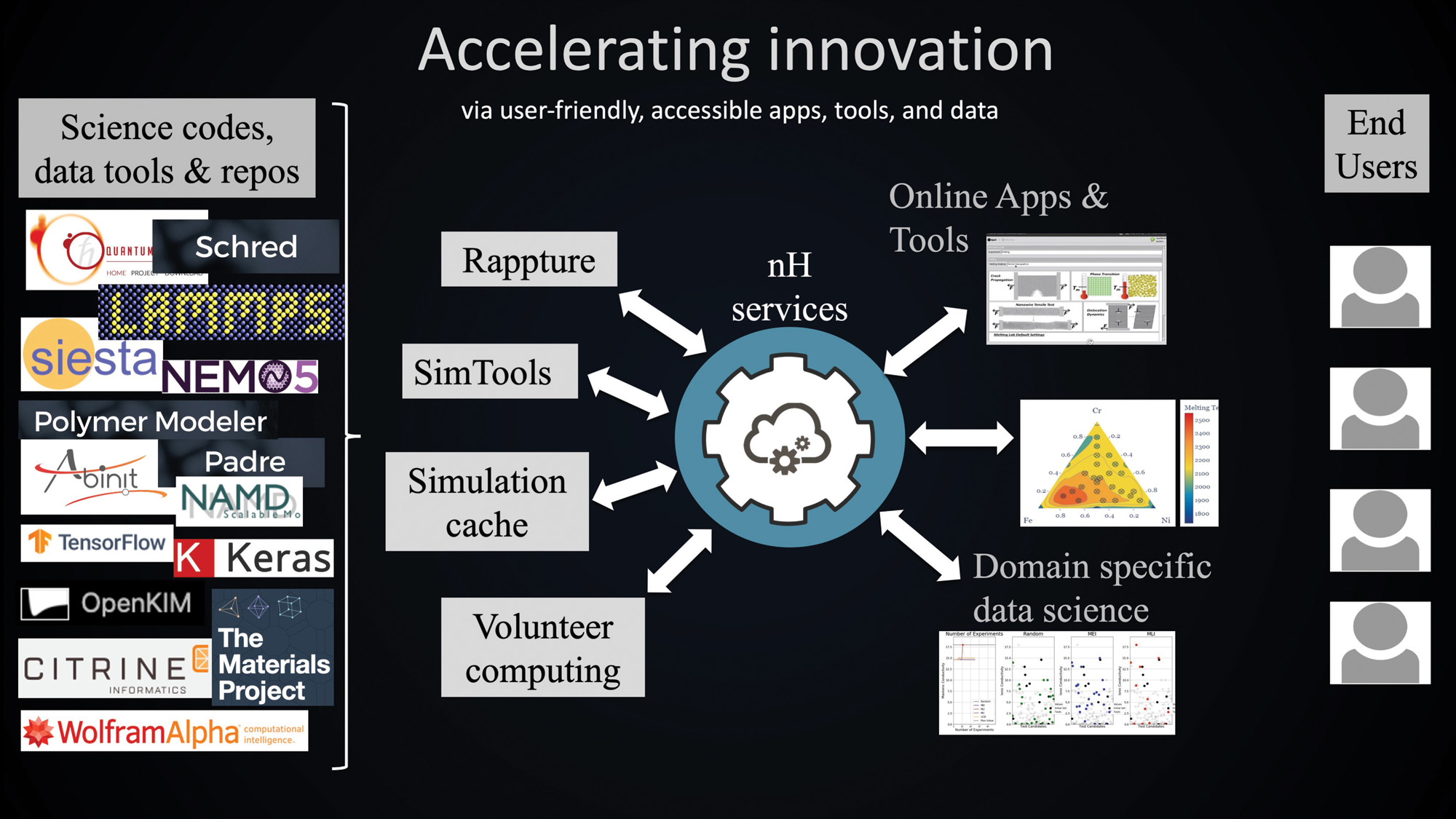


Partnership to Enhance General Aviation Safety, Accessibility and Sustainability
Led by Purdue, PEGASAS is a partnership of six core universities, along with other university affiliates and industry collaborators, to enhance general aviation.
10 minutes to read
PEGASAS, which stands for Partnership to Enhance General Aviation Safety, Accessibility and Sustainability, is the Federal Aviation Administration’s (FAA’s) Center of Excellence (CoE) for General Aviation.
Led by Purdue, PEGASAS is a partnership of six core universities, along with other university affiliates and industry collaborators, that supports FAA research needs related to general aviation. The combined capabilities of PEGASAS span a broad spectrum of lab facilities, expertise, three airports, and a fleet of more than 90 aircraft.
Since it was announced in 2012, PEGASAS has been awarded $40.4 million in a combination of FAA funds and matching support for 34 projects; Purdue is responsible for $13.7 million of this support and has participated in 22 of the projects. These projects drive research related to reduction in risk of injury or death to general aviation pilots, passengers, and property; accessibility to versatile and usable general aviation system access for corporate, fractional, and light-sport aircraft operators; and sustainability of general aviation in serving the needs of future stakeholders in providing societal benefits.
At Purdue, PEGASAS projects have involved faculty and students from the College of Engineering and the Polytechnic Institute, from Aeronautics and Astronautics, Civil Engineering, Electrical Engineering, Industrial Engineering, Mechanical Engineering, Aviation and Transportation Technology, and Engineering Technology. Currently active Purdue projects focus on general aviation safety and augmented weather information for fixed- and rotary-wing aircraft. Here are some highlights:
The project on Safety Analysis for General Aviation is investigating loss of control accidents — one of the leading causes of fatal accidents in general aviation — and how best to train general aviation pilots to avoid them. The work has resulted in the development and recommendation of training maneuvers that help pilots avoid loss of control accidents.
The Augmented Weather Information Project identifies new techniques to help pilots submit Pilot Reports (PIREPs) in a “hands-minimized” way. The work explores augmented reality (AR) technology that allows for easy 3D visualization of cloud formation and air movement in convective environments to help pilots better understand these phenomena. The Purdue-led research team, directed by Barrett Caldwell, professor of industrial engineering and aeronautics and astronautics (by courtesy), has identified key challenges in speech recognition technology to be addressed to enable effective PIREP encoding. In addition, the team is developing a PIREP lexicon based on pilot reporting patterns to overcome some of these issues.
The project on Helicopter Operations Weather Information (HOWI) explores weather information technology and information presentation approaches to rotary-wing pilots. Rotorcraft pilots need access to weather information relevant to their flight profiles, which are at slower speeds and lower altitudes than fixed-wing profiles. The research is identifying safety gaps based on weather information technology and presentation, laying the foundation for developing solutions that can mitigate the weather-related risks to rotary aircraft operations.
More information:
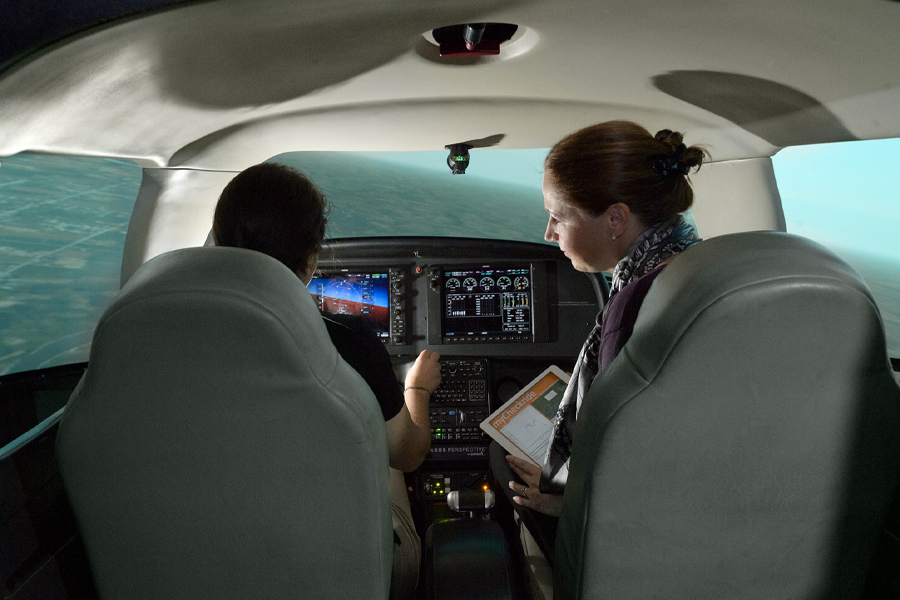

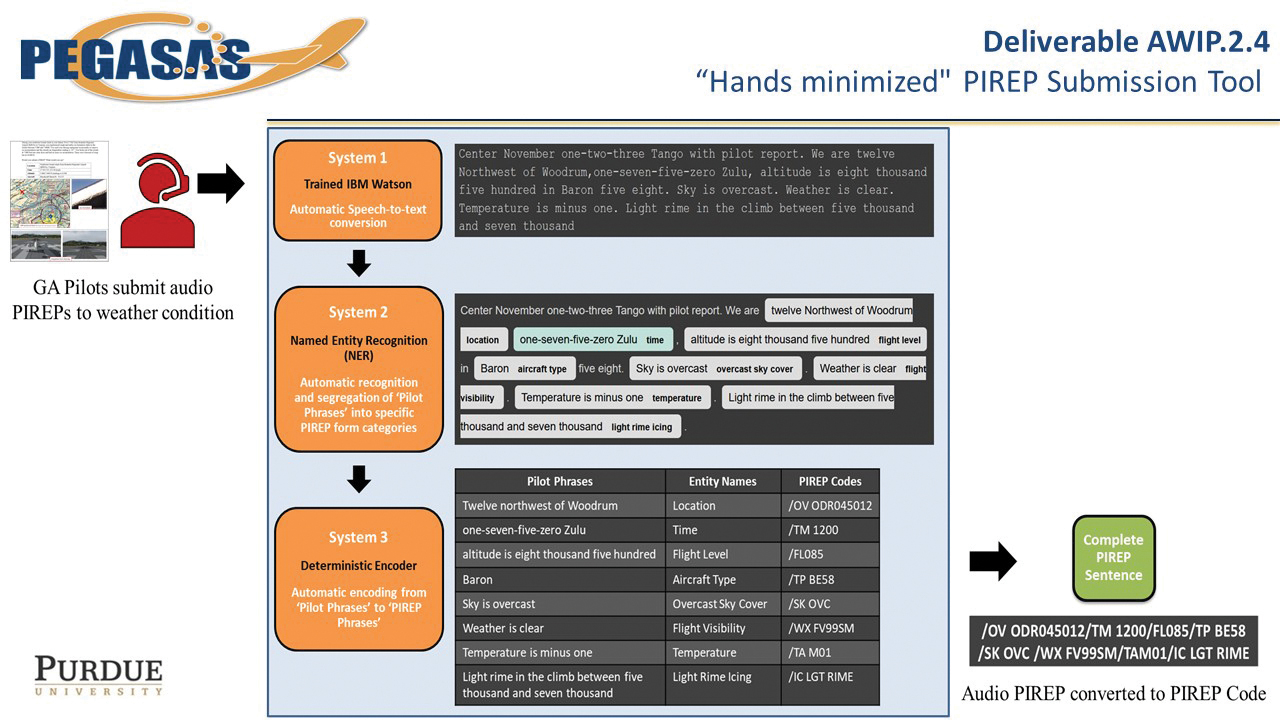
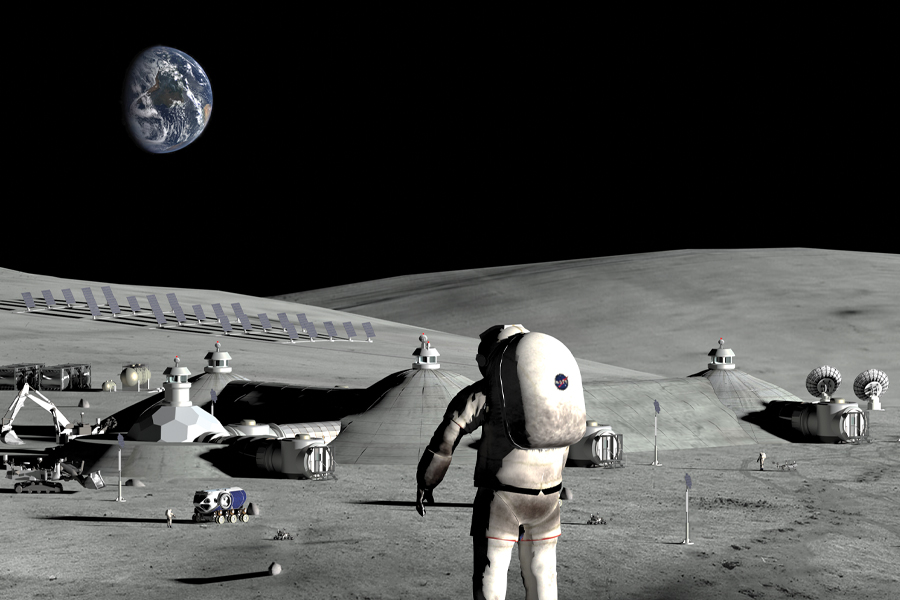

Resilient Extraterrestrial Habitats Institute
The vision of RETHi, launched in 2019, is to establish the know-how to design and operate resilient and autonomous SmartHabs in deep space.
(Image credit: RETHi | Purdue University | Takaharu Igarashi)
10 minutes to read
Banner image: The environment on the surface of the Moon is a great deal more extreme and hazardous than anything on Earth.
Creating safe and comfortable habitations is one of humankind’s oldest activities. Millennia of experimentation on Earth have brought the design and maintenance of our habitats to a high degree of sophistication. However, moving beyond the Earth’s relatively benign surface and out into space, new obstacles related to these harsh and unknown environments — from limited or absent oxygen to extreme temperature fluctuations, radiation, meteoroids, dust and moonquakes — will impede safety and progress.
The vision of the Resilient ExtraTerrestrial Habitats institute (RETHi), launched in 2019, is to establish the know-how to design and operate resilient and autonomous SmartHabs. NASA selected Purdue to lead RETHi as a new multi-university Space Technology Research Institute (STRI), with Shirley J. Dyke, professor of mechanical engineering and civil engineering, as its director. The institute is to receive up to $15 million from NASA over five years.
SmartHabs, or smart habitats, will need to have appropriate defenses that combat the hazards, deterioration, and commonplace faults that may occur in all electro-mechanical systems, while specifically incorporating principles of resilience to reduce and control emergent behaviors that complex systems exhibit. RETHi is not designing a habitat; rather, it is conducting the fundamental research needed to provide techniques and technologies to support SmartHabs’ resilience in deep space environments where resources are extremely limited and mission-critical activities must be the priority.
RETHi is learning to establish the principles for a smart habitat system architecture, while developing autonomous smart habitat interventions that enable response, repair and recovery, especially with support from robots. Awareness is supplied by an intelligent health management system that will make decisions that reflect both the importance and complexity of the SmartHab, while also exploiting the prediction of future behaviors, needs and responses.
To provide the means to study these research questions, the RETHi team is developing three versatile testing environments for exploring these concepts:
Developing these testbeds requires participation of the entire RETHi team and serves as a major mechanism for team integration.
RETHi’s robotics team also is working to provide robust and resilient capabilities, from two directions. A soft manipulator, along with associated controllers, is being developed to make it possible to handle a broader class of objects than traditional rigid robotics. The researchers also are exploiting robot factors, which consider redesign of components aimed to enable robots to work the various mechanisms and perform tasks related to SmartHab maintenance. Modular end-effector system work also is being performed to look at how robots can switch among a range of tools so they can use the right one for the job.
As the entire RETHi team continues to pursue this groundbreaking research, it also aims to contribute to NASA’s mission to educate the next generation of engineers and scientists, while building partnerships with U.S. industries and organizations, and other nations.

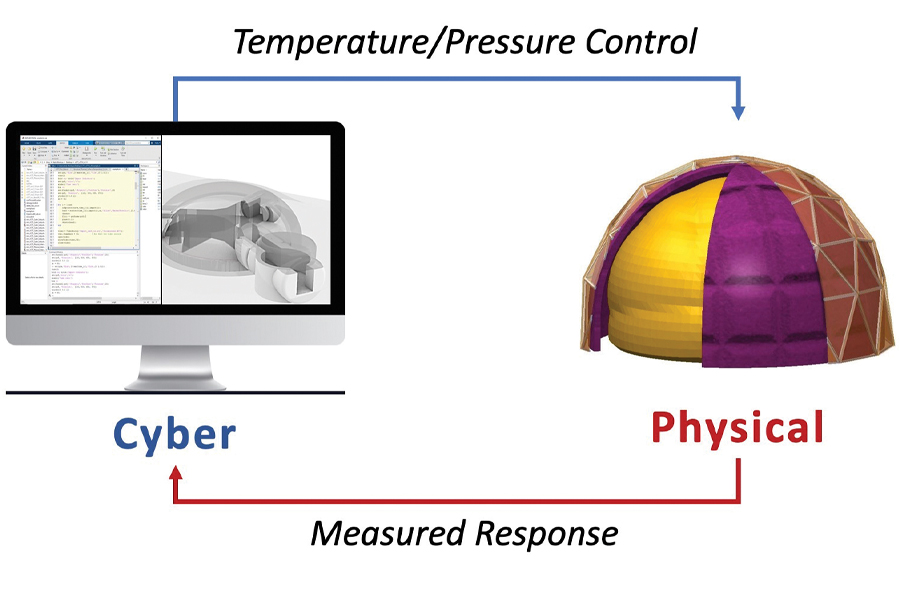
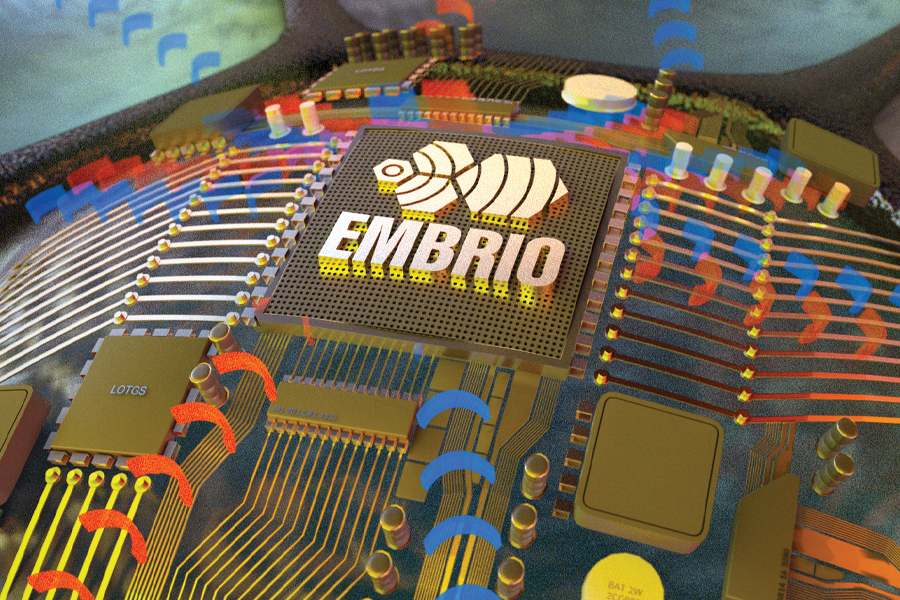

Emergent Mechanisms in Biology of Robustness, Integration and Organization
EMBRIO's goal is to crack the code on how cells organize to change structure function for defending and repairing tissues.
(Illustration credit: Second Bay Studios)
10 minutes to read
Purdue University is the main site of the new interdisciplinary Emergent Mechanisms in Biology of Robustness, Integration and Organization (EMBRIO) Institute. The Institute was launched in Fall 2021 with $12.5 million from the National Science Foundation (NSF) over five years as part of the agency’s Biology Integration Institutes program.
EMBRIO’s goal is to crack the code on how cells organize to change structure function for defending and repairing tissues. Leveraging the expertise of researchers in several Purdue disciplines and at partner institutions, the Institute is using artificial intelligence (AI) to see how cells grow, repair, and replicate themselves with the help of biochemical and mechanical inputs and reactions.
With AI, EMBRIO researchers can use full 3D simulations to develop nonhuman embryos and establish predictive capabilities. This allows them to see, on a massive scale, how the shape of networks and tissues can change. They can then bring together different biological systems – such as a cell’s chemistry, chemical and electrical signaling, and mechanics and mechanical changes — to better predict outcomes in more complex systems.
EMBRIO leaders envision the day when any tissue or organ can be repaired or the replacements can be personalized to the patient. The results of the Institute’s work could bring a new way to address human health and longevity.
The groundbreaking approach involves using each biological system for the best possible data acquisition, enabling researchers to discover how cells respond together to fight off would-be attacks. They aim to answer questions including: How are wounds closed? How can that be accelerated? How do cells orchestrate processes of tissue remodeling for embryo development or to repair and restore cell, tissue or organ function?
EMBRIO’s educational and outreach activities will lead to a greater understanding of how to support transdisciplinary and cross-institutional communication and collaboration to advance science and education. The Institute stands to build and strengthen research collaborations, teaching, and professional engagement among research faculty and trainees and instructors across a wide range of institutional types.
Students at the seven partner institutions will gain experience and exposure to new techniques and tools that will help to advance their knowledge of integrative biology and develop the workforce of the future. Three partner universities — including Morehouse College, a liberal arts historically Black college and university (HBCU) — are essential to expanding the contributions of traditionally underrepresented populations.
The AI and biology industry doubles in size every five years, meaning the biology, engineering and science students coming into EMBRIO now will be the cutting-edge leaders over the next 10 years. EMBRIO will provide effective new training paradigms that are inclusive and prepare the next generations of scientists to navigate diverse fields in the biological sciences and STEM broadly. By combining experimental biology, theory, computation and modeling, alongside training and education of a diverse group of students, the Institute holds the potential to advance biology, biotechnology and the biological sciences workforce.

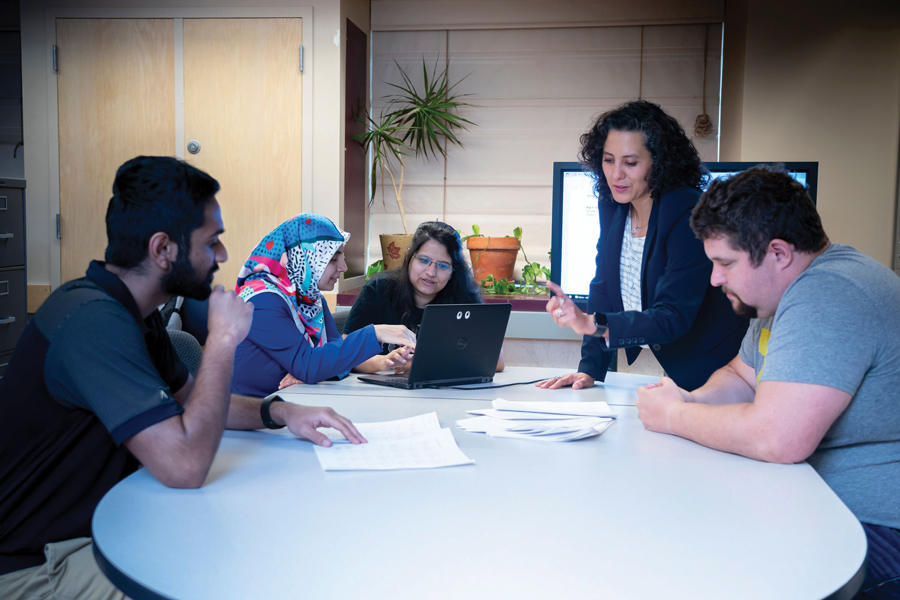
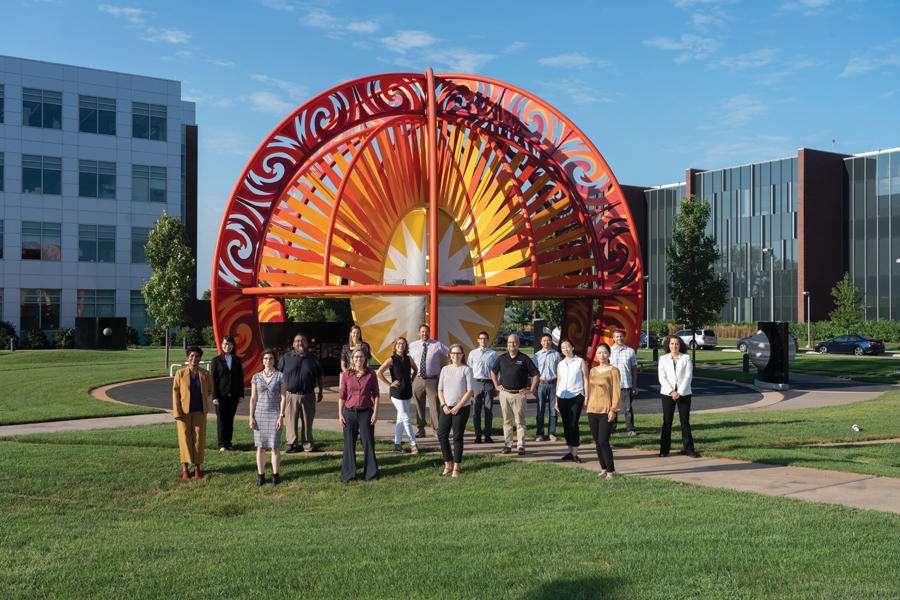


Center for Brain-inspired Computing Enabling Autonomous Intelligence
This center is working to propel cognitive computing, driven by advances in machine learning theory and applications.
(Photo credit: C-BRIC | Purdue University | Adarsh Kosta)
10 minutes to read
Banner image: Shristi Das Biswas, a PhD student in electrical and computer engineering, is creating a simulated environment for a drone (Parrot Bebop 2) in the Gazebo physics simulator in the C-BRIC drone lab. The simulator is used to train and test algorithms developed by C-BRIC researchers before real-world deployment.
The Center for Brain-inspired Computing Enabling Autonomous Intelligence (C-BRIC) is a five-year, Purdue-led center supported by $32 million from the Semiconductor Research Corp. (SRC) via its Joint University Microelectronics Program (JUMP). JUMP provides funding from a consortium of industrial sponsors and the Defense Advanced Research Projects Agency (DARPA). The SRC operates research programs in the U.S. and globally that connect industry to university researchers, deliver early results to enable technological advances, and prepare a highly trained workforce for the semiconductor industry. The Indiana Economic Development Corporation also supports C-BRIC with $1.5 million for an intelligent autonomous systems laboratory at Purdue.
The past decade has seen tremendous progress in cognitive computing, driven by advances in machine learning (ML) theory and applications. Cognitive systems are poised to transform various industries and society at large, spurring demand for computing and semiconductor products. The use of ML for various analytics tasks, including web searches, object recognition in images and videos, and speech recognition, is only the first wave of cognitive computing.
The next wave will usher artificial intelligence (AI) into our lives pervasively through autonomous intelligent systems, such as self-flying drones, self-driving automobiles, and interactive personal robots. It will provide significant capabilities to the nation’s economic robustness and military readiness.
Established in 2018 as a multi-university center, C-BRIC is working to deliver key advances in cognitive computing, enabling a new generation of autonomous intelligent systems. C-BRIC is co-developing neuro-inspired algorithms and theory, neuromorphic computing fabrics and distributed intelligence to address industry challenges. The research team’s expertise spans ML, computational neuroscience, theoretical computer science, neuromorphic hardware, distributed computing, robotics, and autonomous systems.
C-BRIC is moving closer to emulating what the brain can do — sometimes better and faster than the brain. However, hardware cost is still rising. Inefficiencies come from not having the right algorithm, hardware architectures, and circuits and devices. Purdue’s C-BRIC researchers are continuing to work to enable autonomous intelligent systems by improving compute efficiency and robustness of cognitive tasks through cross-layer innovations from algorithms to hardware.
Indicating its reach and value, C-BRIC has graduated more than 70 PhD students. Graduates have gone on to positions with such industry partners such as ARM, IBM, Intel, Micron and Samsung, and many have accepted tenure-track faculty positions at highly ranked universities.
The simulator enables the acceleration of a wide variety of ML inference workloads, showing more than a 100x energy improvement compared with standard GPUs. PUMA helps to better estimate such system-level metrics as energy consumption and onboard data latency.
These simulators evaluate crossbar-based architectures for next-generation AI hardware. The tools have been shared with Samsung, Intel and IBM for internal use. GenieX is also made available to the broader research community through the Github.
Using a smart camera system, AxIS performs synergistic approximations across different subsystems in a DNN-based inference system, leading to energy benefits in image classification and object detection.
To help provide a good way to train large-scale SNNs, C-BRIC has pioneered research on converting deep learning networks to SNNs for lower latency systems. The DIET-SNN operates with asynchronous spikes distributed over time to allow greater computational efficiency on event-driven hardware.
A chip capable of performing brain-like sequential learning tasks. IMPULSE is an SNN accelerator used to achieve real-time data and greater energy efficiency.
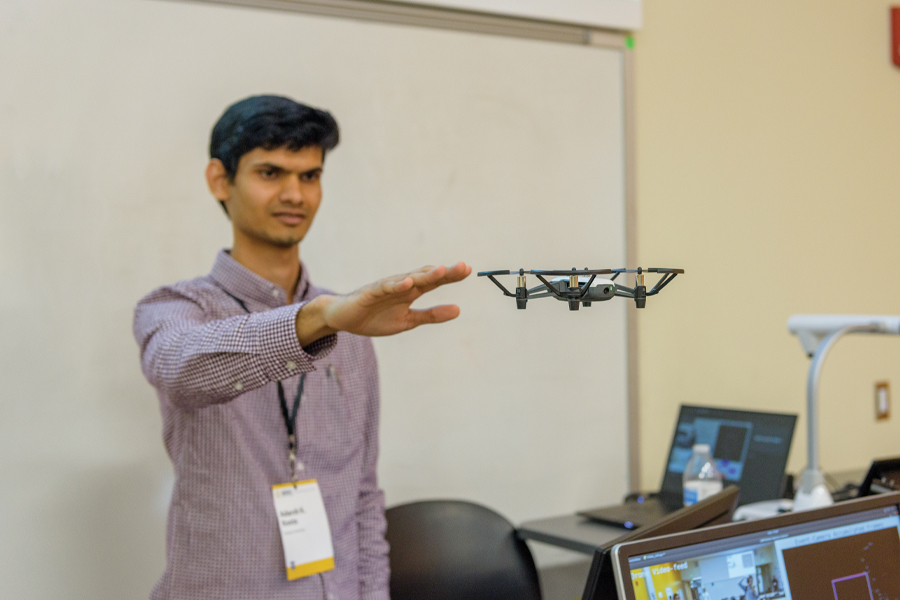



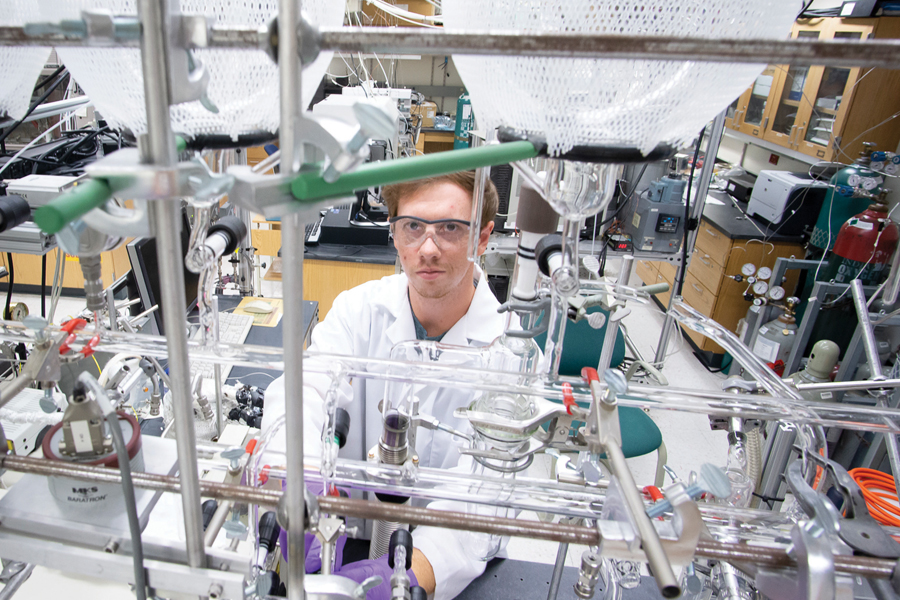

Center for Innovative and Strategic Transformation of Alkane Resources
CISTAR is developing new technologies to create the nation's transition "bridge" toward decarbonization and lead to a more sustainable economy.
(Photo credit: Purdue University | Vincent Walter)
10 minutes to read
Banner image: CISTAR Graduate Fellow and chemical engineering PhD student Phil Kester works with an instrument that studies adsorption of gases on zeolites in Forney Hall.
CISTAR (Center for Innovative and Strategic Transformation of Alkane Resources), founded in 2017 and led by Purdue, supports research to develop new technologies to make more optimal use of U.S. shale-gas deposits. The center is focused on critical technical challenges to realize the nation’s transition “bridge” toward decarbonization and contribute to a more sustainable economy.
The center’s vision is to create a transformative engineered system to convert light hydrocarbons from shale resources to chemicals and transportation fuels, while lowering the nation’s energy costs and enabling a lower carbon footprint. It is anticipated that the decarbonization technologies of processes developed at CISTAR will be achieved by exploring electrification of manufacturing based on renewable energy sources. This also has potential to revolutionize many other industries, such as metals, cement and food segments, and the processes eventually will reduce carbon emissions as well as being cheaper and more economical.
CISTAR is the second Purdue-led National Science Foundation Engineering Research Center (NSF ERC) and the only one still operating. Purdue’s first NSF ERC, the Center for Intelligent Manufacturing Systems, was established in 1988 and concluded in 1997. CISTAR has provided evidence that Purdue is capable of successfully managing a significant investment like an NSF grant as the lead university and operating a complex, cross-institutional partnership. To date, CISTAR has received $21M in NSF funding.
As a result of interdisciplinary, synergistic research, CISTAR has made significant advances in the following areas:
Purdue-based researchers created a new, more economical process for converting natural gas liquid (NGL) to liquid fuel. An alternative ordering of process hierarchy makes fuel manufacturing more efficient with a 30 percent lower capital cost and an 85 percent higher internal rate of return.
In the all-important polymer manufacturing process, researchers demonstrated a new approach to chemical catalysis that enables high propylene yields using a reduced carbon footprint. The solution provides a new way to make the building blocks more efficiently, through the oxidative dehydrogenation of propane, using a new catalyst formulation and a new membrane that can separate alkanes from alkenes with unprecedented selectivity. The findings could support more energy-efficient production processes for many plastics.
CISTAR’s research has resulted in 16 patent applications, and the center is beginning to see some licensing to companies.
CISTAR recently reached a milestone of 30 industry members, collectively representing more than 1 million employees, with continuing new interest in joining CISTAR. Aided by effective CISTAR outreach, industry contacts have remained active despite the many challenges caused by the COVID-19 pandemic.
In addition, CISTAR has grown a powerful base of partnerships with U.S. national research laboratories, as well as major labs in the UK, Germany and Brazil.
CISTAR provides several innovative, collaborative forms of workforce development, for learners of various ages and educational stages.
At the K-12 level, since 2018, CISTAR students and staff have impacted 18,592 students and more than 1,000 teachers across the U.S. with STEM outreach. The center has engaged 41 teachers in summer research and collaborated with Purdue’s INSPIRE research institute in the School of Engineering Education to develop a curriculum unit for eighth-grade science integrating engineering design and energy concepts, titled “Turn the Lights On!”
The CISTAR Research Experience and Mentoring (REM) summer program is a unique combined experience that is creating a diverse next generation of technically- and community-minded engineers. Students conduct six weeks of cutting-edge research on “Energy for Our Growing World” with CISTAR and then spend four weeks mentoring third-through-fifth-graders at the National Society for Black Engineering (NSBE) Summer Engineering Experience for Kids (SEEK) camp.
Summer research programs designed to broaden participation in chemical engineering have engaged 42 undergraduate students from across the country. A signature program developed with the NSBE attracts students from groups underrepresented in engineering to Purdue. CISTAR Graduate Fellows benefit by collaborating across research groups at different campuses, participating in a range of professional development activities, and collaborating with partner companies.
In 2021, CISTAR Graduate Fellows were offered an opportunity to take innovation-learning courses through CISTAR’s Innovation Academy, which builds on and extends the center’s research goals. The academy works with and encompasses workforce development goals to create a technically excellent and inclusive community. It provides mentoring and growth in technology-led entrepreneurship and innovation, focused on practical skills and applications.
Through a partnership with Dow, an Industrial Reaction Engineering Course was created in which students can earn two certificates. This course, which engages Dow reaction engineers, has impacted more than 600 people from across the globe since it began in 2020.

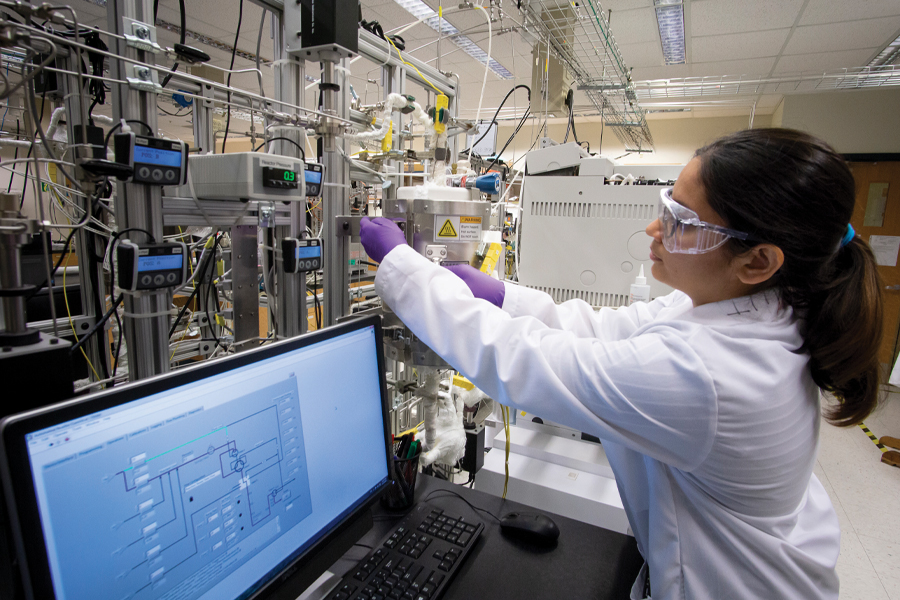
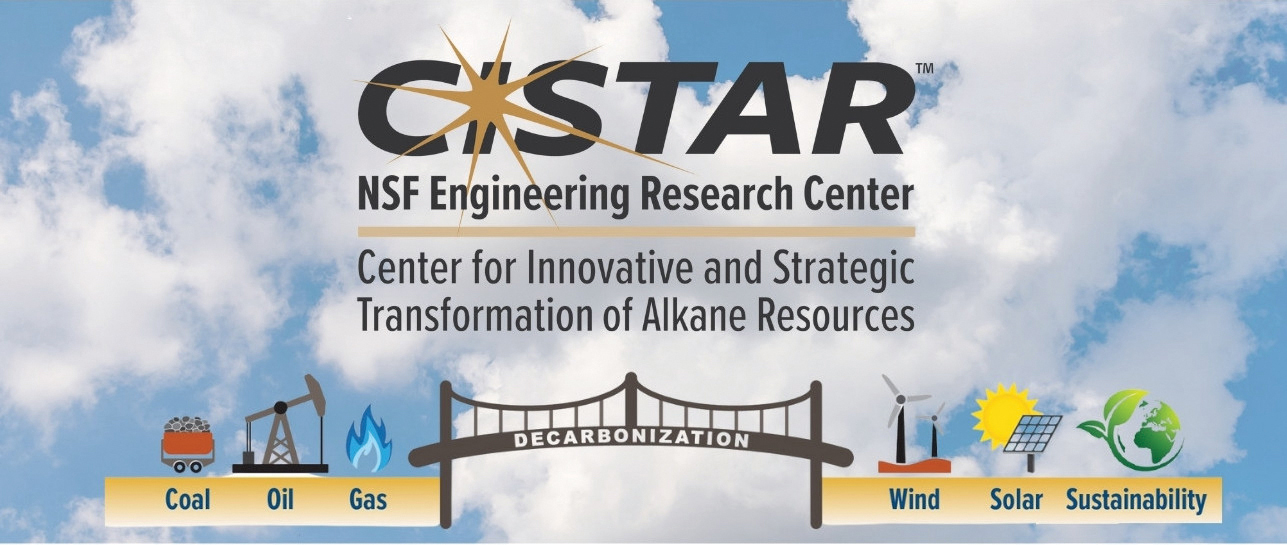
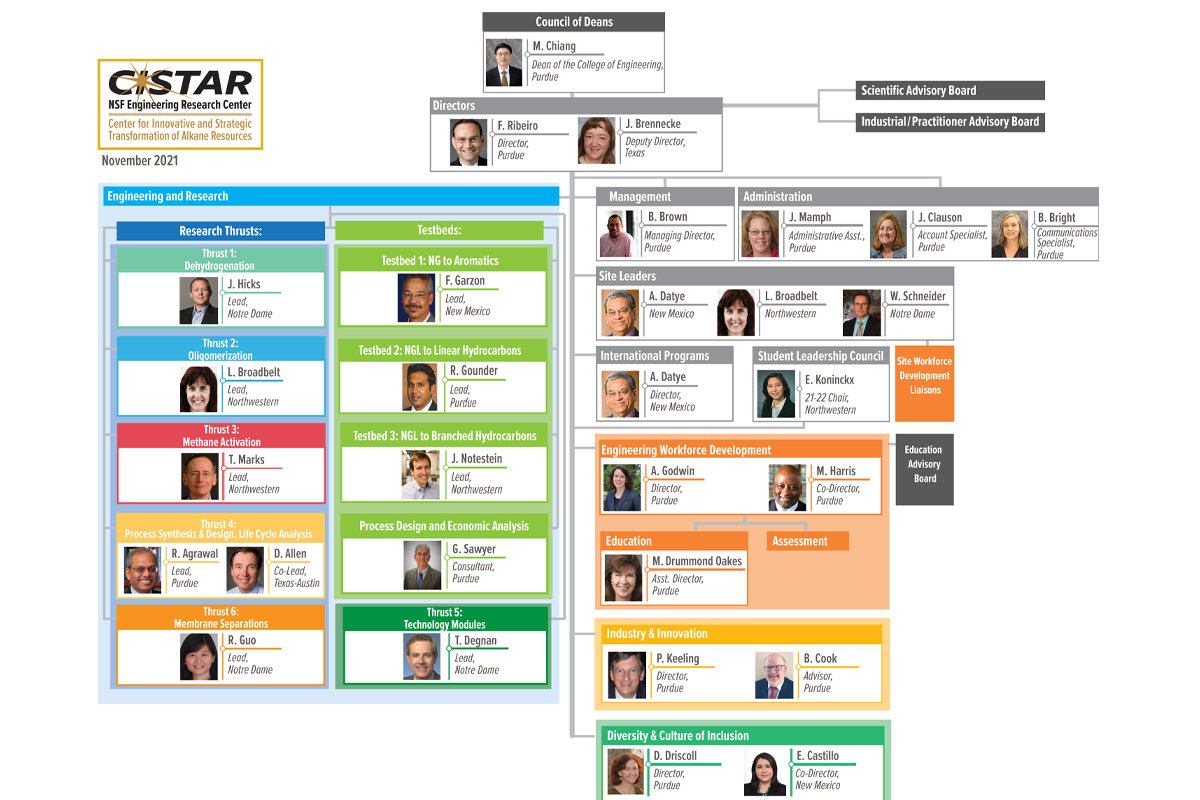


Long-term Assistance and SErvices for Research | Partners for University-Led Solutions Engine
Purdue leads a global consortium that supports USAID in bringing societal, environmental, educational and agricultural improvements in developing countries.
10 minutes to read
In 2018, Purdue University was selected by the United States Agency for International Development (USAID) to co-create research-driven solutions for developing countries via LASER PULSE — the Long-term Assistance and SErvices for Research (LASER) Partners for University-Led Solutions Engine (PULSE).
Representing the largest single research award to Purdue’s College of Engineering, LASER PULSE is a five-year, $70 million program funded through USAID’s Innovation, Technology, and Research Hub. Purdue leads a global consortium of university and nongovernmental partners that supports USAID as it navigates developmental challenges, ultimately leading to societal, environmental, educational and agricultural improvements, in partner countries around the world.
The LASER PULSE program enables interested USAID missions, bureaus and independent offices to rapidly access a network of international universities and associated researchers to help refine and solve development challenges. LASER PULSE researchers and practitioners collaborate with the USAID offices to identify new research questions, conduct demand-driven research, translate research results into development impact, and build technical and research capacity of universities and researchers in developing countries.
LASER PULSE has built a vast network of 2,600 researchers and practitioners from more than 61 countries. These members have access to LASER PULSE’s multitude of trainings, courses, casebooks, templates, tools, and guiding documents for capacity building. In three years, more than 1,700 members have enrolled in LASER PULSE courses.
As one of the largest programs in USAID’s Higher Education Solutions Network 2.0, in only three years, LASER PULSE has had a commendable impact. Via 31 projects in 15 countries, LASER PULSE has contributed to addressing key issues and positioned Purdue as a thought leader in evidence-based research for development. LASER PULSE’s influence can be seen in three main areas: conducting evidence-based research to shape national policies based on local priorities, enhancing how the U.S. government designs and executes aid projects, and building the capacity of researchers and practitioners around the world.
For example, in Kenya, LASER PULSE’s research findings have supported the Kenyan Ministry of Education in identifying and addressing challenges in its early-grade reading program and outlining essential steps to scale and sustain the program. Similar progress is underway in South Africa, where LASER PULSE’s research in human trafficking was presented to the government for policy-making consideration.
Additionally, across multiple countries, LASER PULSE is supporting USAID missions in creating evidence-based designs of some of their major aid programs. For example, in South Sudan, LASER PULSE research helped inform activities to incorporate psychosocial and social-emotional skill development into education, along with literacy and numeracy.
LASER PULSE also has significantly advanced Purdue faculty and student research opportunities in critical focus areas through $8.4 million in funding. Projects led by Purdue faculty, with leaders noted, are:
In addition to helping faculty members meet their research objectives, LASER PULSE offers the Purdue community opportunities for partnerships with other higher education institutions and practitioners via its network. The network fosters relationships on which researchers can rely for future collaboration.
More information:
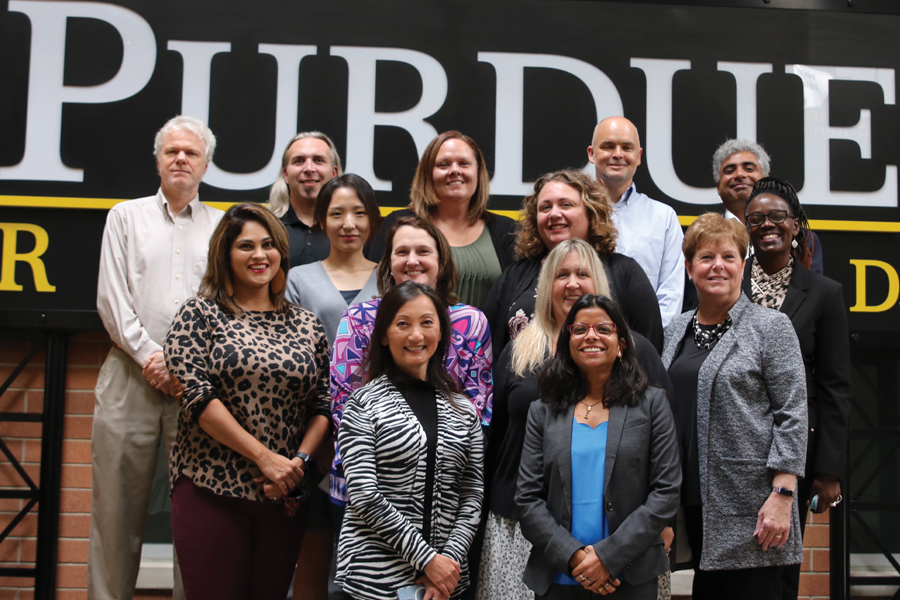
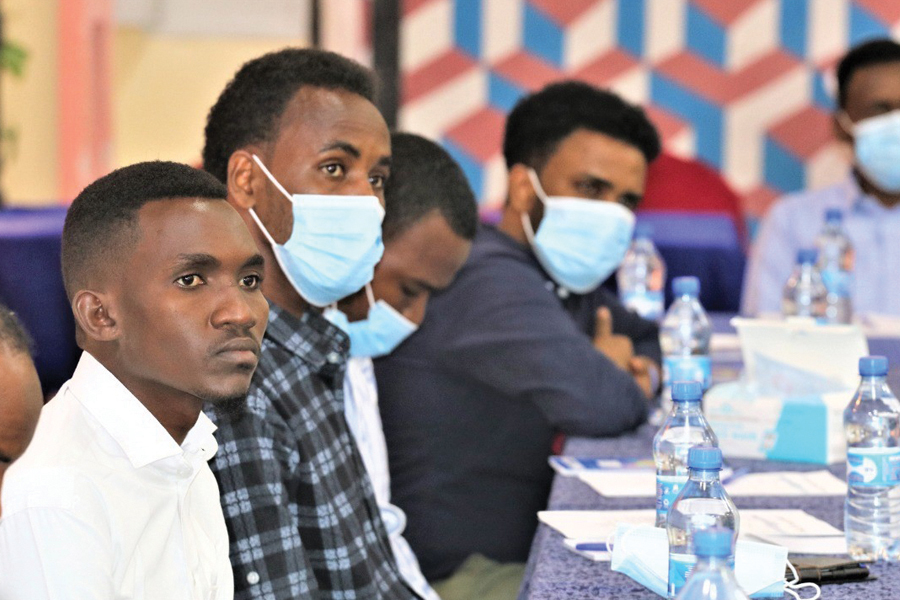
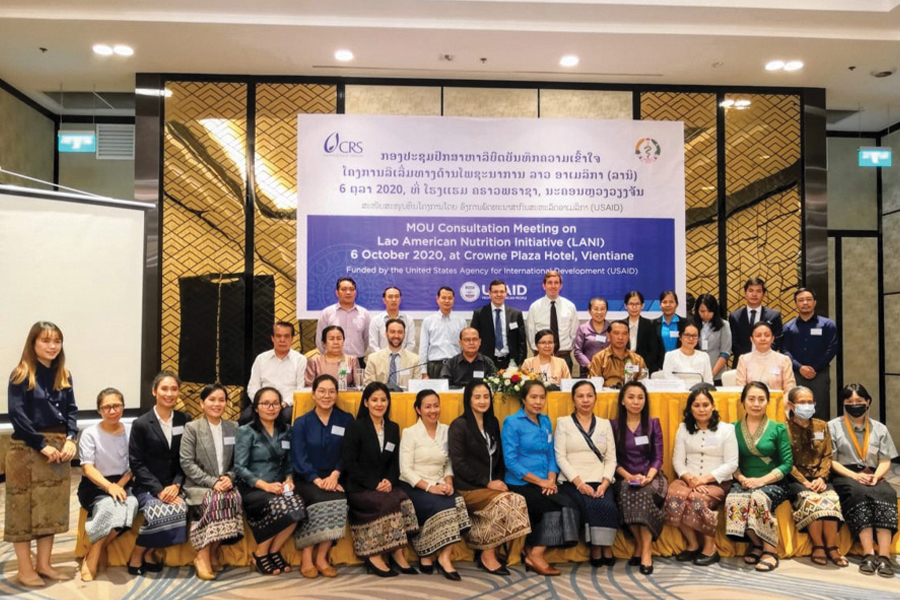
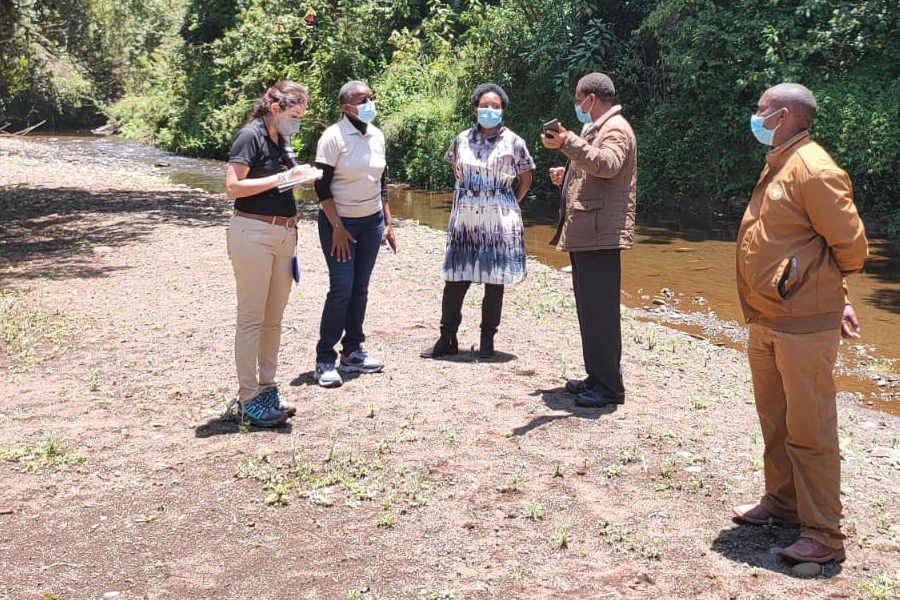


Quantum Science Center
The QSC is dedicated to overcoming key roadblocks in quantum state resilience, controllability, and ultimately scalability, realizing the quantum future.
(Image credit: ORNL | Jill Hermann and Purdue University | Arnab Banerjee)
10 minutes to read
Banner image: Quantum materials may host exotic quasiparticles and promise applications in quantum technologies. This picture depicts a quantum spin liquid, one example of quantum materials studied by Purdue researchers in collaboration with Oak Ridge National Laboratory (ORNL).
Purdue University is a core partner in the Quantum Science Center (QSC), one of five quantum information science (QIS) research centers supported by the Department of Energy under the National Quantum Initiative (NQI). Launched in October 2020, the QSC is headquartered at Oak Ridge National Laboratory and funded for $115 million over five years, with more than $11 million for Purdue researchers.
The QSC is dedicated to overcoming key roadblocks in quantum state resilience, controllability, and ultimately the scalability of quantum technologies to realize the quantum future. The center helps strengthen national security; ensure economic competitiveness; and facilitate breakthroughs in fundamental physics, materials science, and energy production and distribution.
It focuses on three main thrusts and goals:
Especially developing topological quantum materials that may host exotic quasiparticles known as “non-Abelian anyons” that could help make more robust “topologically protected” qubits, to overcome the fragility of the quantum state.
Developing algorithms, as well as experimentally-implemented “quantum simulations” — particularly those that exploit topological systems.
Developing, optimizing and demonstrating new quantum sensing devices and systems, including supporting algorithms, to measure exceptionally weak signals. Such quantum sensors could aid the search for the elusive “dark matter” that is fundamental to our universe, as well as for the “non-Abelian anyons” in topological quantum materials.
In the QSC’s first year, a team of a dozen Purdue researchers, from various College of Engineering and College of Science disciplines, have made important progress toward reaching these goals. Advances have included preparing and characterizing several key anyon material platforms; developing and combining artificial intelligence (machine learning) and quantum algorithms to study quantum materials and devices; developing novel magnon-enabled hybrid quantum sensing device platforms and superconducting circuits for quantum materials characterization; and designing a “Windchime” platform of mechanical sensors to detect dark matter.
Over the next year, QSC researchers aim to build on this progress. They are looking to demonstrate capabilities important to sensing such key objects as anyons and dark matter particles; develop physics-driven machine learning approaches to optimize quantum sensors; and perform various related quantum simulations.
Integral to the activities of the QSC is preparing the next generation of scientists and engineers, by engaging students and postdoctoral associates in research activities. These initiatives include an annual summer school (first held in 2021), and a postdoctoral and graduate student association that hosts regular career development seminars. Further, by working closely with such industry partners as ColdQuanta, IBM and Microsoft, the QSC strongly couples its basic science foundation and technology development pathways to transition applications to the private sector.
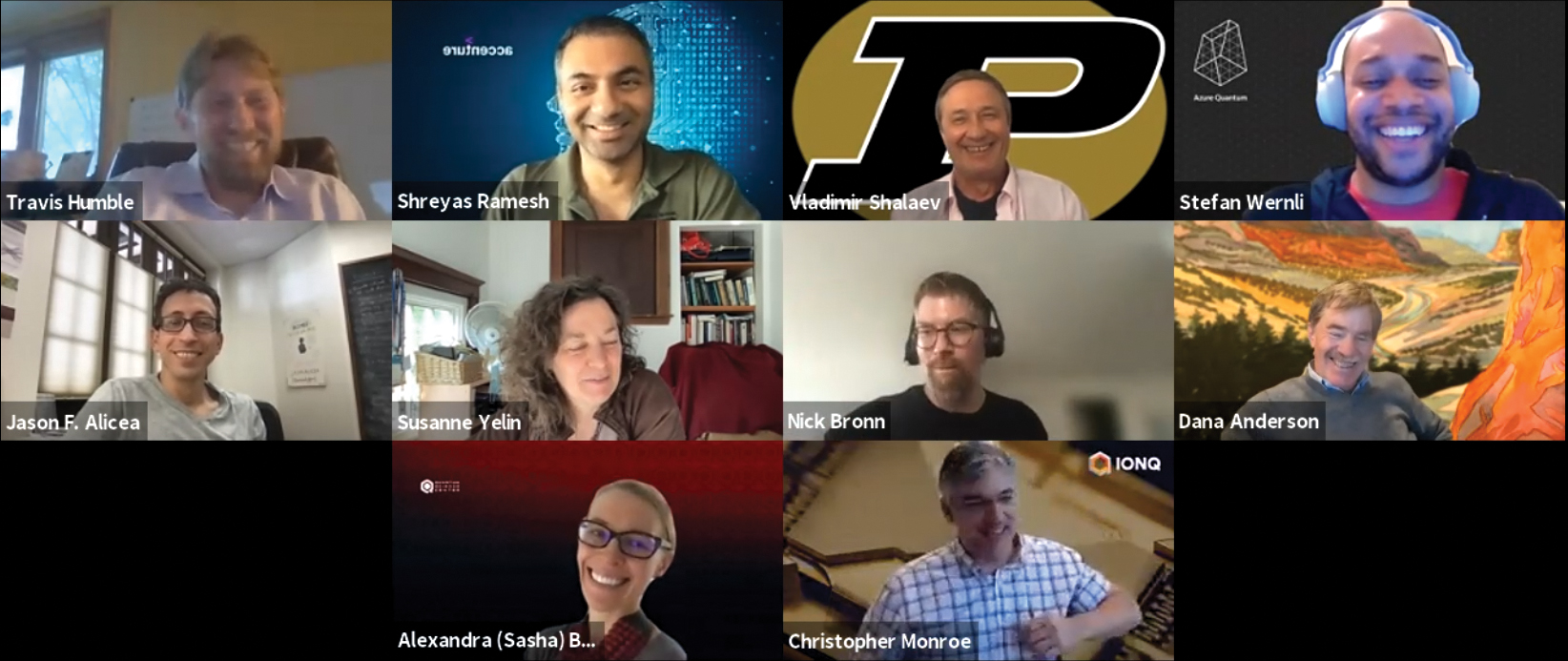


Composites Manufacturing Simulation Center
The CMSC partners with government and industry to develop advanced simulations to replace experimentation in designing and manufacturing composite products.
10 minutes to read
Banner image: Thermwood LSAM 105 in Residence at CMSC.
Founded in 2015, the Composites Manufacturing Simulation Center (CMSC) of Purdue University has served as the Design Modeling and Simulation Technology Area of the Institute for Advanced Composites Manufacturing Innovation, one of the national manufacturing institutes sponsored by the U.S. Department of Energy.
Since its inception, the CMSC has received more than $52 million from four primary sponsors: the Department of Energy; the National Science Foundation (NSF); the Indiana Economic Development Corporation; and industry (including Dassault Systèmes, a Fortune 50 software company that develops software for 3D product design, simulation, manufacturing and performance).
The CMSC’s notable accomplishments to date include 15 PhD degrees earned by graduate researchers in three College of Engineering schools; 15 industrial internships in sponsor companies; and development of the Composites Virtual Factory HUB, a cloud-based manufacturing simulation HUB.
In addition, the CMSC has created the following manufacturing workflows appropriate to model-based systems engineering and the Dassault Systèmes 3DEXPERIENCE platform:
The CMSC has attained several recent achievements. Highlights include:
Designation as the 3DEXPERIENCE EDU Center of Excellence of Dassault Systèmes in 2020 — an advance celebrated virtually during the COVID-19 pandemic and in person Oct. 28, 2021 at the Indiana Manufacturing Institute (IMI) in the Purdue Research Park.
The Dassault Systèmes 3DEXPERIENCE EDU Center of Excellence in Advanced Composites, founded on an eight-year partnership between Purdue and Dassault Systèmes (2013-2021), is expected to bring significant digital-age benefits to the partners and the global society. The partners are advancing the digital enterprise by developing the human talent essential to this new paradigm, as well as by using the 3DEXPERIENCE platform to exercise digital twins of complex composites manufacturing and performance to demonstrate the power to predict phenomena understood today only by empirical experiences.
The CMSC and Dassault Systèmes are collaborating to introduce these concepts to a range of advanced composites industries, from original equipment manufacturers to supply chain industries. The philosophy of the 3DEXPERIENCE Education Center of Excellence is to create a learning environment at multiple levels — from advanced research in manufacturing and performance of advanced composites to student engagement at all levels needed to build the workforce for Industry 4.0. Also, Dassault Systèmes’ relocation of its West Lafayette offices to the IMI, adjacent to the CMSC, in 2020 is providing mutual advantages to Dassault Systèmes employees, Purdue faculty and students, and their stakeholders.
Establishment of the Thermwood Large Scale Additive Manufacturing Laboratory in 2021. Dale, Indiana-based Thermwood Corporation develops composites additive manufacturing systems with the scale needed to make products like the Al Davis Memorial Torch in the Allegiant Stadium in Las Vegas, which is the world’s tallest 3D-printed structure, at more than 90 feet. It is composed of 3D-printed segments made of carbon fiber and reinforced polycarbonate composite, and printed on the Thermwood LSAM. The Thermwood Large Scale Additive Manufacturing Laboratory houses a Thermwood LSAM 105 with print capacity of volume up to 250 ft3 and printing rates of 100 pounds/hour. It also houses the Composites Additive Manufacturing Instrument (CAMRI), which the CMSC team developed to validate virtual twin simulations/additive manufacturing.
Formation of the Composites Additive Manufacturing Industrial Consortium in 2021, with the goal of serving the end user, material supplier and additive manufacturing equipment manufacturing industries in developing this emerging industry. At the foundation of the consortium is the digital twin of the manufacturing process, ADDITIVE3D, which provides the engineering community with simulations of composites additive manufacturing that can guide successful printing of these large and complex structures and predict performance.
Attraction of an outstanding young faculty member to the CMSC and the Purdue School of Aeronautics and Astronautics. Professor Dianyun Zhang, who holds a PhD in aerospace engineering from the University of Michigan, joined Purdue after her initial faculty appointment at the University of Connecticut Department of Mechanical Engineering. She received an NSF CAREER award in 2018 and has authored several seminal, archival publications on composites manufacturing science and engineering.
A growing relationship among The Boeing Company, Dassault Systèmes and the CMSC in developing high-rate manufacturing of thermoplastic composites with application in current and future aircraft. The model-based engineering and virtual twin technologies of the 3DEXPERIENCE platform serve as the foundation for future innovations in aircraft design and manufacturing. The power of the computer software to connect all the stakeholders to execute design, manufacturing and product lifetime support will accelerate product innovation and reduce time to market.
Additionally, the CMSC and Purdue Department of Physics have been engaged in designing and developing composite structures essential to the next discovery in particle physics with CERN, the European Organization for Nuclear Research, in NSF-supported work. ATLAS is one of the four major experiments at the Large Hadron Collider (LHC) at CERN in Switzerland. A virtual twin of the LHC support structure is critical to successful consideration of the multi-physics phenomena governing support structure performance. Successful digital twins of multiple support structures have guided the design and validation of support systems for the LHC, ATLAS, and the Compact Muon Solenoid (CMS).
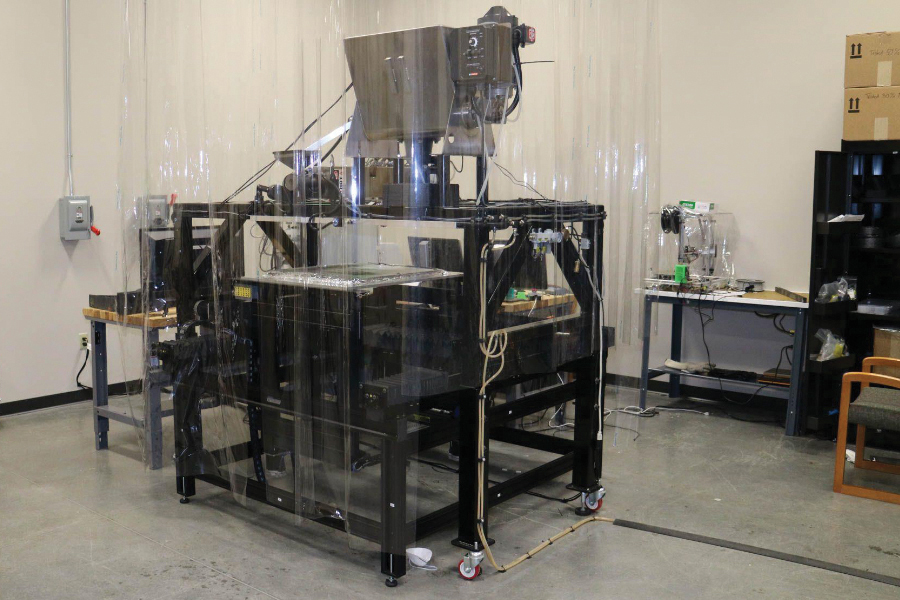



Purdue Energetics Research Center
PERC researchers are working to meet the national need to make, test, detect, deploy and defeat next-generation energetic materials.
(Photo credit: Purdue University | Jared Pike)
10 minutes to read
Banner image: Silver salts, a lead-free explosive PERC researchers developed in collaboration with the Army Research Laboratory.
The Purdue Energetics Research Center (PERC) is the largest academic research laboratory in the world focused on energetic materials — propellants, explosives and pyrotechnics — which are becoming increasingly important in national defense. A key mission of the center is to meet the national need to make, test, detect, deploy and defeat next-generation energetic materials.
PERC’s research portfolio is sponsored by a large number of domestic federal agencies, including the Army Research Office, Air Force Office of Scientific Research, Office of Naval Research, Defense Threat Reduction Agency, DARPA (Defense Advanced Research Projects Agency), and many related Department of Defense and Department of Energy laboratories.
The Purdue center, established in 2017, also is a premier source of engineering talent for a broad range of partners in industry and government, with special emphasis on the Departments of Defense, Energy, and Homeland Security.
PERC is a collection of roughly 160 faculty, staff and students, who share labs and experimental and computational resources across six buildings at Purdue, working on more than $80 million in current open research contracts.
The researchers’ efforts span many orders of magnitude in scale, from individual molecules to manufacturing systems, and including both experimental and computational projects. In general, computational and modeling work is coupled with experimental work across all scales, providing fertile ground for validating theory and predicting performance.
The synergy between PERC’s modeling and experimental work allows rapid progress in both areas.
Modeling work describes the behavior of energetic materials and the processes that make them. These studies range from molecular dynamics studies of hot spot formation in stressed energetic crystals to the solid mechanics of energetic composites to the behavior of energetic powders during processing. The researchers also pursue computational approaches for advanced control and optimization of manufacturing of energetics, including continuous crystallization, filtration, and drying; synthesis; and formulation.
Experimental work involves synthesis of energetics, fuels and binders; characterization and testing of new molecules and formulations; creation of new formulations and new formulating schemes; advanced manufacturing (including additive manufacturing and continuous manufacturing); continuous crystallization, filtration and drying; comprehensive optical diagnosis of combustion and post-detonation fireballs; high-rate mechanics studies of energetics behavior; assessment of energetic interactions with acoustic, mechanical and electrical insults; and discovery and utilization of novel reactive species and structures to enhance the performance of energetic formulations.
PERC has accomplished much in its four years.
The center has launched three successful companies in the last several years, including Next Offset Solutions, Level 6 Engineering, and Adranos.
Under a three-year agreement announced in August 2020, PERC is helping the Army enhance its technology associated with energetic materials. Although the modern military uses such new technologies as advanced computing, data analytics, artificial intelligence, robotics, hypersonic aviation and biotechnology, energetic materials remain the key components in many Army munition systems. Energetics research is critical for the U.S. armed forces to achieve priorities set out in the 2018 National Defense Strategy.
In the immediate future, PERC is poised to pursue the continuous, modern manufacturing (including additive manufacturing) of key molecules that are essential to our nation’s arsenal but for which there is no stable domestic source. This work will involve new synthetic routes for energetic molecules and new reaction engineering schemes to implement them. It also will include implementing continuous crystallization, filtration, and drying, as well as new formulation methods.
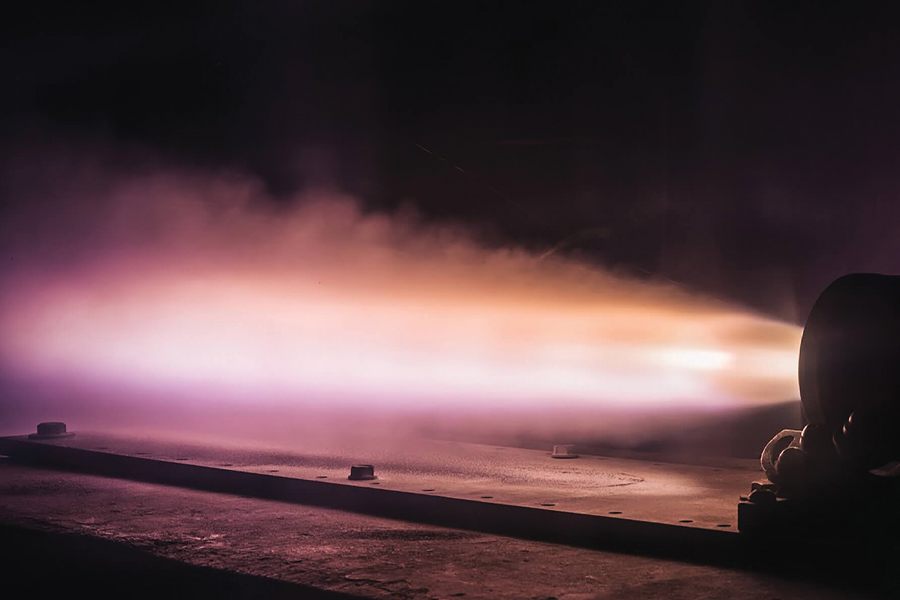
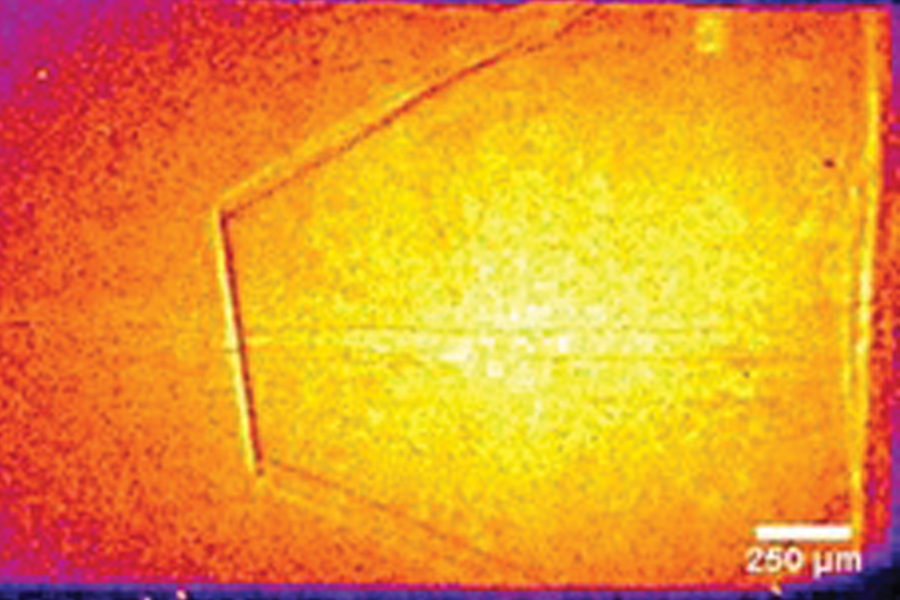
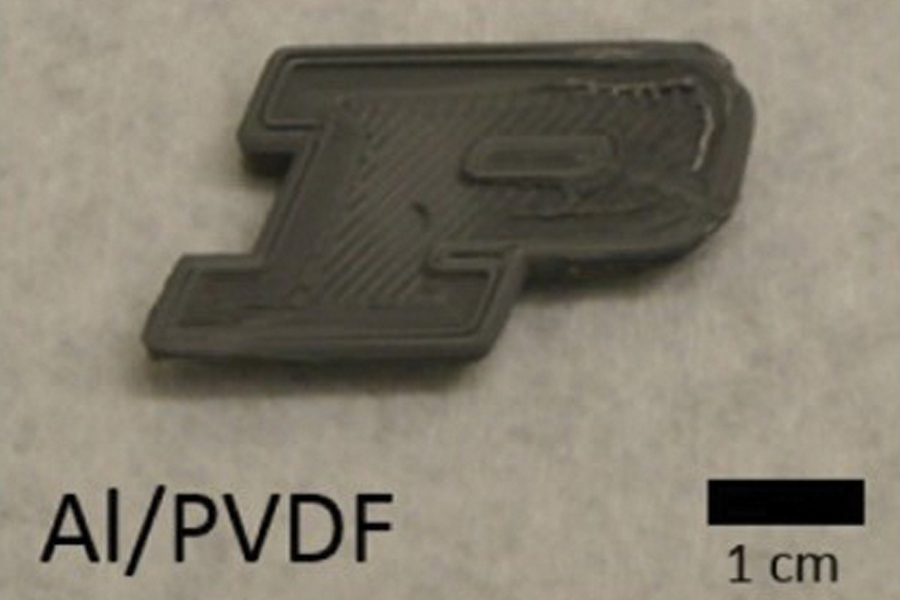


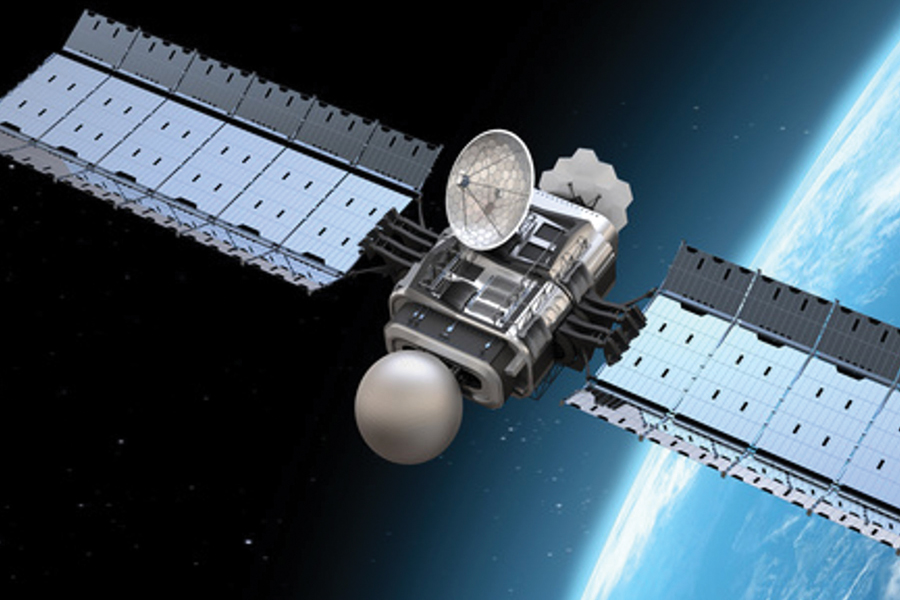

Center for Secure Microelectronics Ecosystem and Scalable Asymmetric Lifecycle Engagement
Purdue is collaborating with government, industry and university partners to bolster workforce development and research in designing secure microelectronics.
(Image credit: Hellas Sat)
10 minutes to read
A skilled technical microelectronics workforce is required to ensure success of U.S. Department of Defense (DoD) modernization initiatives. As microelectronics is reshaping the semiconductor industry, devices used in national security and defense need additional innovations to remain secure and operate in extreme environments. Cutting-edge education and research are critical to meeting these national security requirements.
Purdue University was selected in December 2019 to lead a five-year, DoD-sponsored national initiative aimed at addressing the urgent need to develop a highly skilled U.S. microelectronics workforce to bolster national security. Comprising 17 partner universities across the country, the Scalable Asymmetric Lifecycle Engagement Microelectronics Workforce Development program (SCALE) is a $19.2 million public-private-academic partnership formed to advance the technical capabilities of the domestic microelectronics workforce, and to motivate talented STEM undergraduate and graduate students to pursue federal government careers in the semiconductor field.
SCALE is being managed in partnership with the Naval Surface Warfare Center Crane Division as a nationally coordinated network of government, industry and university partners, regionally executed. Faculty from across Purdue’s College of Engineering are collaborating with experts from 16 other universities, the DoD, NASA, the Department of Energy NNSA labs, and the defense industry to create a microelectronics workforce focused on national security needs.
The workforce development program provides microelectronics modules; mentoring; public- and private-sector internship matching; and targeted research projects for college students interested in these microelectronics specialty areas:
SCALE partners work with students across the nation to build strong relationships with government and the defense industrial base, as well as to develop new technologies needed for secure and resilient microelectronics.
Among its first-year accomplishments, SCALE:
Going forward, SCALE will aim to recruit and train a larger number of students through a combination of classes, projects, research and internships. It also will be important to further strengthen the partnership between SCALE’s member universities and its partners, to ensure that these experiences are as up-to-date, motivational and educational as possible.


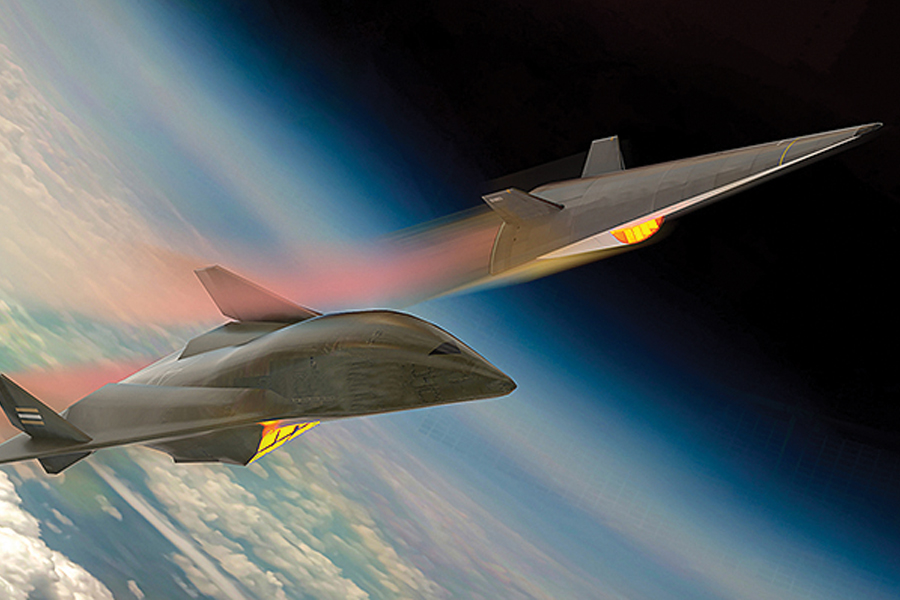

Hypersonics Industry Partnership
With more than 40 hypersonics researchers and with leading-edge facilities, Purdue is creating America's hypersonics engineering epicenter.
(Image credit: Second Bay Studios)
10 minutes to read
Today’s geopolitical environment is driving intense focus on developing hypersonic systems that meet U.S. defense and security needs, now and for the foreseeable future. National pursuit of hypersonic systems by government and industry has intensified during the last few years. Hypersonic vehicles can travel more than five times the speed of sound and fly in the upper reaches of the atmosphere, significantly challenging an adversary’s ability to detect, track, target and engage. These systems are a top Department of Defense (DoD) priority to ensure U.S. dominance.
With more than 40 hypersonics researchers and with leading-edge facilities, Purdue is creating America’s hypersonics engineering epicenter. 2021 has brought outstanding strides, including:
Purdue University approval of funding to build the 65,000-square-foot, $41-million Hypersonics and Applied Research Facility (HARF) in the Purdue Aerospace District. HARF will house:
Announcement of plans to build the first-of-its-kind Hypersonic Ground Test Center (HGTC), in the Purdue Aerospace District. This central shared utility will allow industry partners to test their hypersonic technologies using multiple test cells and laboratories. The HGTC will be operated as a new nonprofit consortium of national defense industry partners, including Rolls-Royce North America, that also will administer the facility.
Separately, last summer, Rolls-Royce announced the single largest research investment in Purdue history, to increase its footprint in the Purdue Aerospace District. The expansion will incorporate new test facilities to develop high-altitude and hybrid-electric engines that will power the next generation of U.S. military aircraft.
Hosting of the two-day Hypersonics Summit 2.0 with the National Defense Industrial Association. The conference brought together all major industry leaders in hypersonics, along with government and academic partners. Keynote speakers were Gen. David D. Thompson (MSAAE’89), vice chief of space operations for U.S. Space Force; Gillian Bussey, director of the Joint Hypersonics Transition Office in the Office of the Under Secretary of Defense for Research and Engineering; and the Hon. Daniel S. Goldin, the longest-serving NASA administrator.
Since 2001, Purdue has been home to the Boeing/AFOSR (Air Force Office of Scientific Research) Mach 6 quiet wind tunnel — the largest active hypersonic quiet wind tunnel in the world. Quiet tunnels create low-disturbance freestream conditions to study different aerodynamic scenarios, such as spacecraft re-entry or missile flight through the atmosphere, as well as replicating unique engine conditions for extremely high-speed propulsion. They provide well-controlled conditions for testing and evaluation for faculty, industry partners, federal agencies, and other stakeholders.
The Mach 8 and HYPULSE tunnels will offer controlled environments to research several facets of high-speed flight. Specifically, the Mach 8 tunnel will more closely simulate low-freestream disturbance levels, and the HYPULSE tunnel will more closely simulate high-temperature flows — both of which are characteristics of hypersonic flight in the atmosphere that are difficult to create on the ground. Collecting data at higher Mach numbers is critical to extending the understanding of flow physics, especially heat transfer and flight control effectiveness, as DoD programs continue working to fly faster and farther.
A $3.2-million, three-year grant from the NASA University Leadership Initiative (ULI) for a project to refine techniques and hardware associated with a particular set of optical and laser sensors that can be used to examine the surfaces and flow of a hypersonic vehicle to help aircraft maintain control in flight. The award is one of five led by university faculty chosen by NASA to explore innovation in aeronautical research areas, including hypersonic flight.
Purdue’s large, interdisciplinary team of hypersonic research experts brings broad, deep experience in basic and applied research for feasibility determination and design of strong, next-generation hypersonic systems. Faculty and students — collaborating with colleagues from universities across the nation — are a powerful brain trust for national teams in solving the most challenging problems through full-scale lab flight tests and simulation models, supported by continuous learning.
Hypersonics graduates of Purdue are well-represented in industry, government and academia — for example, contributing at Sandia National Laboratories, Defense Advanced Research Projects Agency (DARPA), NASA, Johns Hopkins University Applied Physics Laboratory (JHU/APL), and the DoD. In this way, Purdue is helping to develop the next-generation workforce to sustain hypersonics innovation and production for years to come.
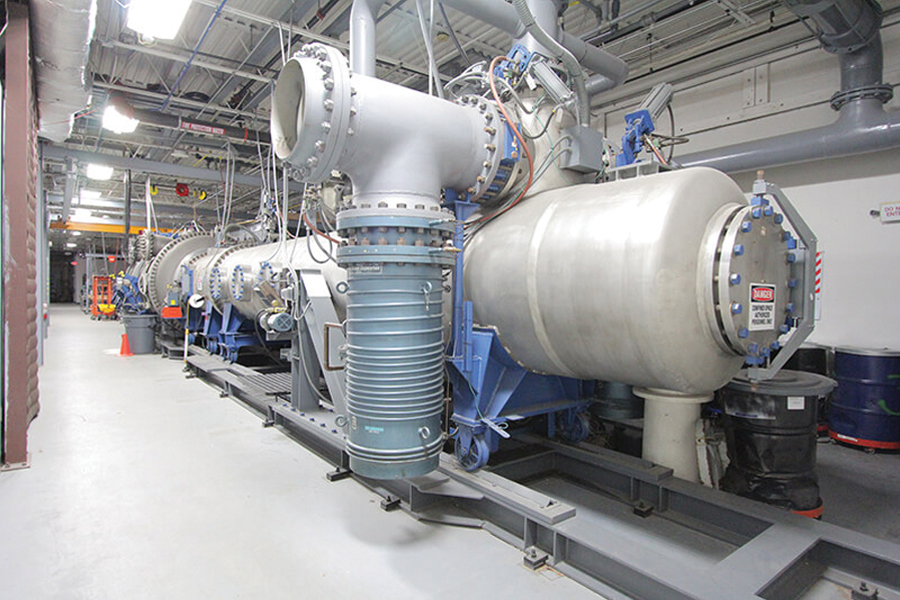
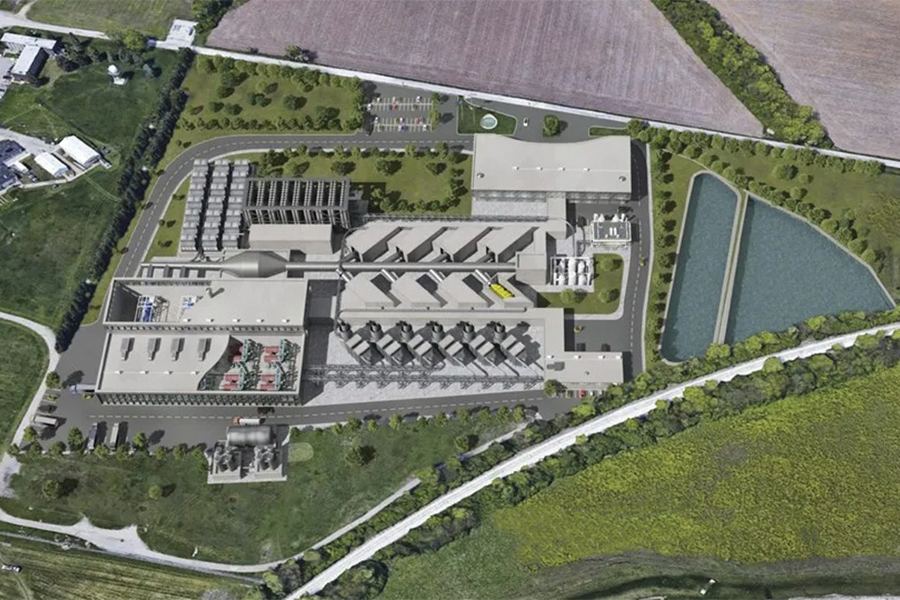
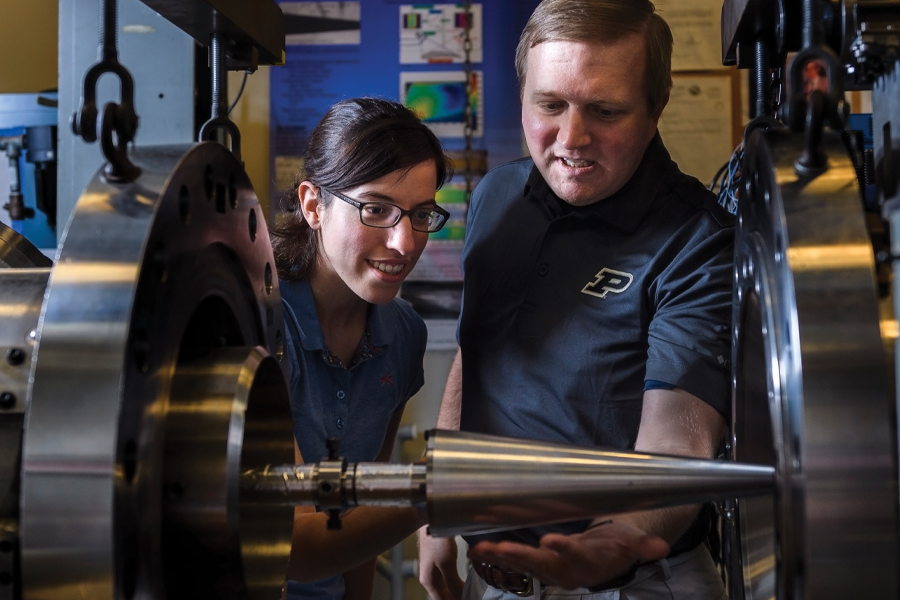
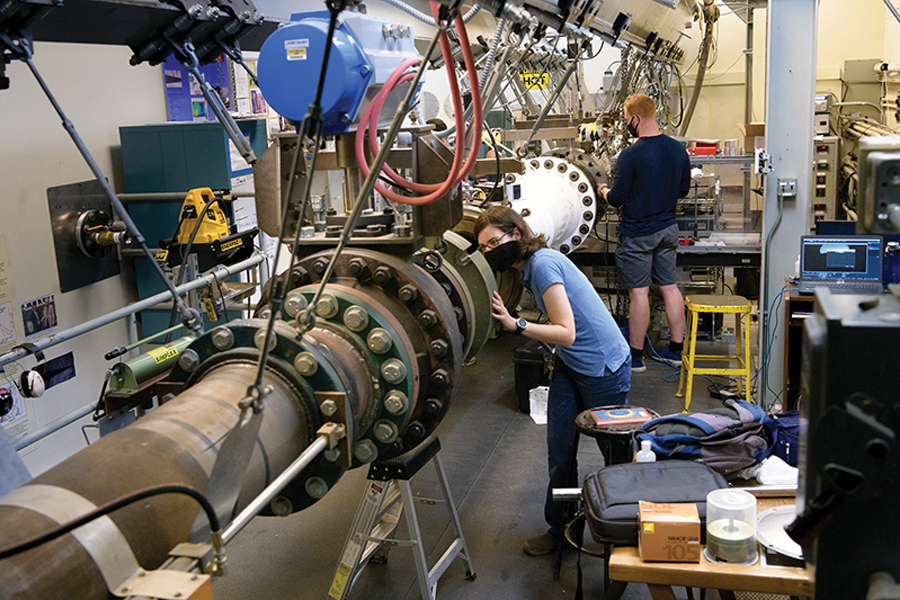

Introduction